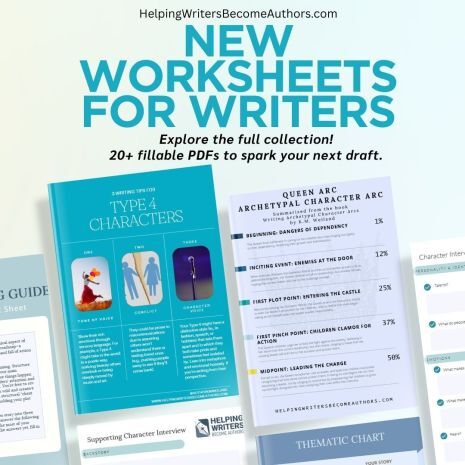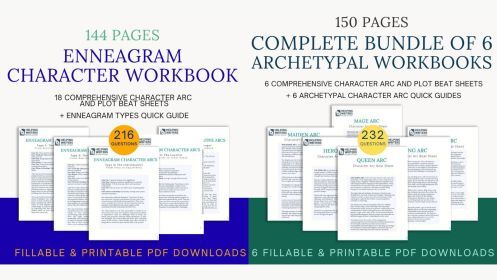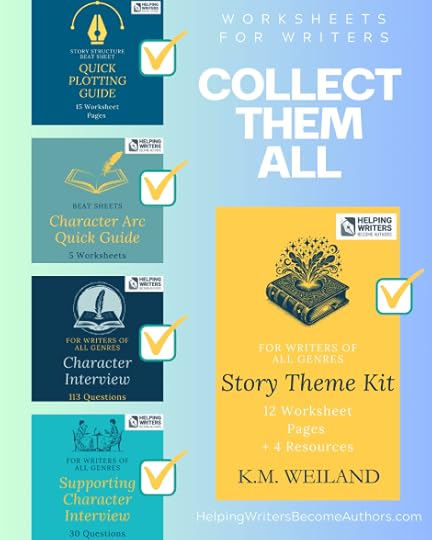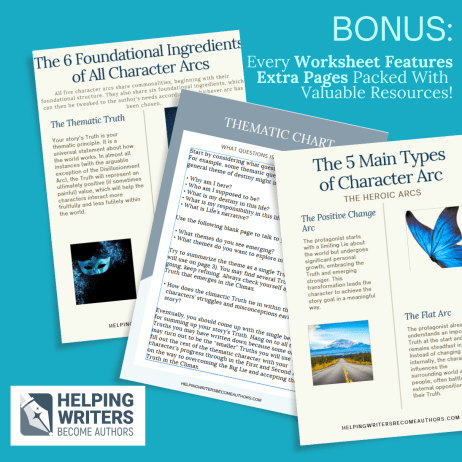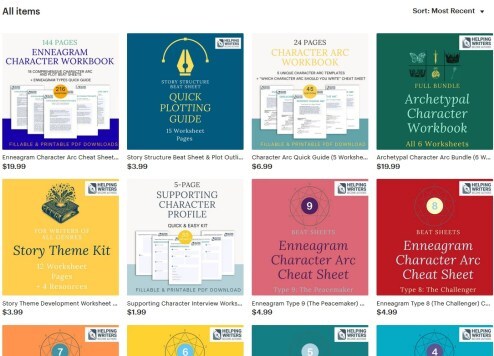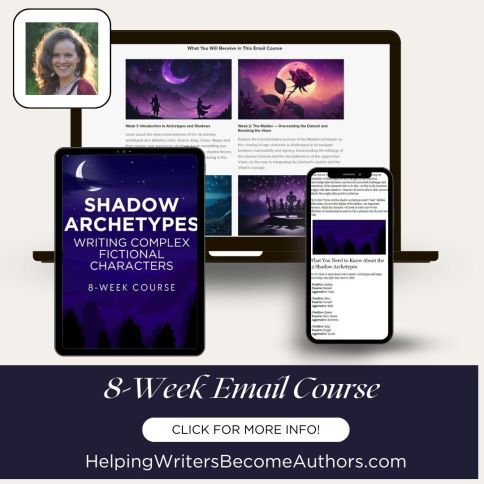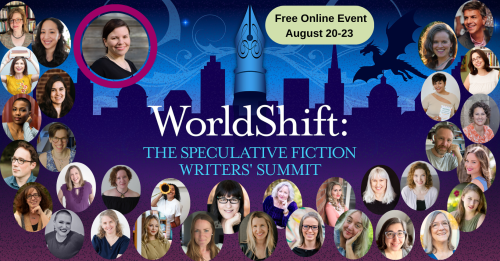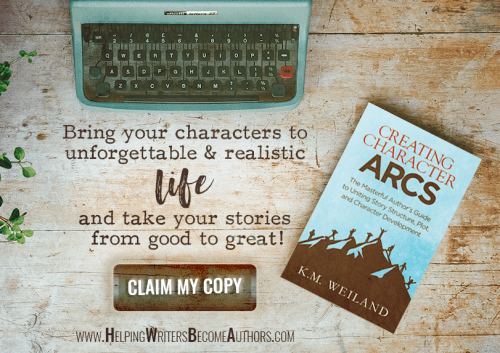K.M. Weiland's Blog
September 8, 2025
Why All Stories Are Myth—and How They Transform Us
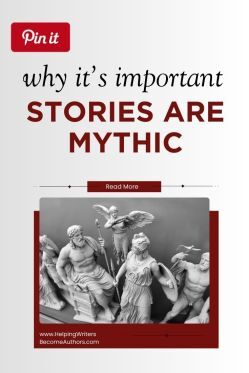 Stories are more than just entertainment. They’re also more than just reflections of real life. This is because, at its core, narrative is myth. Whether you’re crafting epic fantasy, gritty crime drama, or cozy rom-coms, deep archetypal patterns always echo through your characters, plots, and themes. Story is the theater of the psyche. It is a dream we collectively dream, in which each character and conflict embodies a part of ourselves. When we recognize this hidden foundation, we can tap this archetypal power to access the kind of storytelling that not only captivates readers but also transforms both their inner lives and our own.
Stories are more than just entertainment. They’re also more than just reflections of real life. This is because, at its core, narrative is myth. Whether you’re crafting epic fantasy, gritty crime drama, or cozy rom-coms, deep archetypal patterns always echo through your characters, plots, and themes. Story is the theater of the psyche. It is a dream we collectively dream, in which each character and conflict embodies a part of ourselves. When we recognize this hidden foundation, we can tap this archetypal power to access the kind of storytelling that not only captivates readers but also transforms both their inner lives and our own.
A few weeks ago, I shared a post that struck a chord with many of you—about my deep desire to witness the return of “soulful storytelling.” Specifically, I wrote about my personal dissatisfaction and even boredom with contemporary filmmaking. In that post, I talked about wanting to return to stories of subtextual depth, emotional earnestness, and goodheartedness (among other qualities). In pondering on this further via the many thoughtful exchanges I got to have with all of you in the comments section on that post, I realized there are more layers to the shifts we have seen in modern storytelling—and the next shift I believe we will soon see.
One of those layers is the tension we often feel, but perhaps do not always recognize, between hyper-realism in fiction and storytelling’s inherently mythic foundation. I’m talking about the differences between stories that dutifully mimic or even exaggerate the causality of everyday life and those that draw upon the timeless archetypal patterns of the psyche.
When asked to define “story,” we may reach for the convenient answer that story is a replication of real life. But this, I will posit, is not actually true. Throughout history, we have increasingly dressed our stories in the verisimilitude of realistic details and the self-consciousness of our minds’ inner workings. But underneath all the hyper-realism, the true and archetypal shape of story itself remains something quite mythic. It is much less a product of our conscious minds—our conscious and scientific understanding of the world’s workings and our place in it—and much more a product of our unconscious minds—our symbolic and dreaming selves.
Recognizing storytelling (no matter the genre) as inherently mythic allows us, as storytellers, to walk onto a much bigger stage. We exit the relatively small stage of the self we know—the conscious self—and enter the vastness of the self that lives beyond consciousness and therefore beyond the restricted understanding allowed by the ego.
When we approach story as something inherently mythic—an archetype that exists outside and beyond humanity’s “creation” of it as an artform—we regain the capacity to create stories that touch the deepest parts of ourselves to create not just transformation, but initiation.
In This Article:Story as a Primordial Force: The Mythic Foundation of NarrativeThe Theater of the Psyche: Every Character Is YouArchetypes as Living Forces in StorytellingStory as a Living Dream: Why All Stories Are MythStory as a Primordial Force: The Mythic Foundation of NarrativeFrom the far depths of human memory, story comes to us as a primordial force. Indeed, human memory itself is a story. Before we packaged stories for $20 mass consumption—before movies, before novels—story came to us as oral myths, ritual dramas, stone etchings, and catalysts of initiation.
Nowadays, storytelling is a highly specialized skill set. We come to sites like this one to study beat sheets and timing. We divide stories into highly specialized genres and check tropes off a list. We come to story as if it is something we can master. But in approaching story like this, we risk missing not just the deeper initiation story wants to offer each of us. We also risk missing out on the best possible stories we could be sharing with our own audiences.
I want to talk about one trend in particular that I see in modern storytelling. In itself, this trend is not problematic. But when too much emphasis is placed on it, it can create a polarized experience of story that can weaken its deeper impact. This trend, as I hinted previously, is hyper-realism. It is the trend—all but ubiquitous now—of faithfully recreating modern life on the page or the screen. In some ways, we might say it is “showing” rather than “telling.”
Again, I’m not saying this approach is wrong. I love detailed fiction that shows me the story world with such dimensionality that I’m there. I love deep POVs that faithfully mine and recreate the complexities of human interiority—everything from memory to motive.
But my feeling is that when this hyper-realism is not founded upon the deeper mythology of story itself, we often risk losing the forest for the trees. I will even go so far as to say this approach is a driving force behind the type of modern storytelling that carries characters and audiences to destinations awash with sophisticated despair or, at best, ambiguous apathy.
This is not to say mythic stories do not confront their fair portion of darkness and despair. But as I continue to study story as an archetype, it is my belief that these old stories (everything from the creation stories to The Odyssey to old folk tales like Little Red Riding Hood) speak to us, first and always, in metaphor and symbol. Certainly, as we explore the continuity with which the shape of story comes to us over the eons, I believe we can see that story itself is much more than simply a mirror of life. It is an initiatory force.
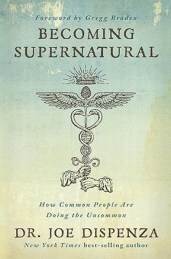
Becoming Supernatural by Dr. Joe Dispenza (affiliate link)
At the end of his book Becoming Supernatural, Dr. Joe Dispenza defined initiation:
I believe we are on the verge of a great evolutionary jump. Another way to say it is that we are going through an initiation. After all, isn’t an initiation a rite of passage from one level of consciousness to another, and isn’t it designed to challenge the fabric of who we are so we can grow to a greater potential?
Story is a symbolic map of transformation. It is a blueprint for growth and change. I wrote in the previous post about how I will never be satisfied with even one single story that does not challenge me in some way—because, for me, that is what I look for in a story experience. I look for that frisson of electricity, that tinge of awe, as I sense however faintly that I am entering an uncanny space—a wyrd space.
In the old Norse, the concept of “wyrd”—from which we get our word “weird”—indicated not just the uncanny, but the fated. In story, what I seek for myself are fated encounters. I seek shatterpoints of destiny that fracture, however slightly, reality as I know it.
The Theater of the Psyche: Every Character Is YouEvery story holds the seed of this transformational power. It doesn’t matter the medium or the genre. This potential is latent in all stories—whether about hellbent mobsters or romantic HEAs or comedic farces or historical reproductions or fantastical allegories. However, whether and how well this potential is realized depends on the author. To some extent, it depends on the author’s conscious awareness of and ability to empower the story’s mythic sub-structure. But I would say, even more perhaps, it depends on the author’s personal touchstone with the mythic subconsciousness that lives within them.
If we think of story as being like a dream, we are not too far from the truth. Story—true, deep, initiatory story—is something that arises from an inner depth existing beneath and beyond egoic consciousness. We are more likely to find these stories by “channeling” them than by trying to brainstorm them.
Like dreams, stories are innately symbolic—even, and perhaps especially, when we do not realize it. As authors, we cannot always explain where our best work comes from. Often, it may seem it does not come from us. It was given to us. We are the first to be changed by it. Indeed, we may spend the rest of our lives not quite understanding it.
Also like dreams, I believe it is useful to take one more step back from the hyper-detailed and hyper-realistic showing of fiction. Until we do so, we are likely to think our stories are peopled by a varied and dimensional cast, perhaps purposefully created by us to showcase a vast number of perspectives and lifestyles. When we go deeper, we may see instead that the deepest and most mythic stories represent a single psyche—perhaps the author’s, perhaps a bit more specifically the protagonist’s, but ultimately the collective psyche.
Some schools of dream interpretation remind the dreamer to consider that everything that shows up in a dream is you. That is, it is not your father in the dream; it is some aspect of your own psyche wearing the face of your father. The same can be said of a story. Every character in the story—indeed, everything in the story—is an aspect of one psyche. The hero, the antagonist, the love interest, the mentor—all are representations of a unified psychological perspective and experience.
The deep resonance of stories that work—stories that initiate us—is the result of this inner unity. Audiences resonate because they’re watching externalized inner conflicts of the self. If you start examining stories from this perspective, you may be amazed at what you discover.
A quite obvious example is The Lord of the Rings. I particularly remember the first time I saw the scene in Fellowship of the Ring, in which the characters flee underground into the Mines of Moria, where they awaken goblins and trolls in the darkness. In so many ways, this can be seen as a descent into the unconscious and a confrontation with the shadow monsters who reside forgotten there.
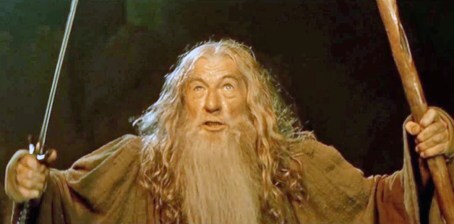
The Balrog confrontation symbolizes the psyche’s descent into shadow.” (The Lord of the Rings: The Fellowship of the Ring (2001), New Line Cinema.)
Another vivid example of this inner-psyche theater can be found in Hayao Miyazaki’s Spirited Away. Nearly every character in Chihiro’s journey can be read as an aspect of the self.
Her parents’ careless greed is the egoic appetite that abandons her to the unconscious.The enormous baby, Boh, is the unruly inner child who must be reparented before growth can occur.Yubaba, the domineering mistress of the bathhouse, embodies the controlling authority of the superego.Haku functions as the animus—an inner guide and companion who helps Chihiro navigate transformation.No-Face represents the shadow self: a ravenous, distorted self that can only be healed through compassion and reintegration.In this light, Spirited Away becomes not simply a fantastical coming-of-age tale, but a symbolic map of psychological wholeness.
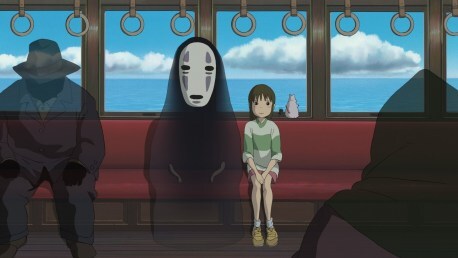
Miyazaki’s Spirited Away shows how every story is myth: each character symbolizes an aspect of the self, from the shadow in No-Face to the inner child in Boh. (Spirited Away (2001), Studio Ghibli.)
And in a more realistic example, we can see how the various characters in Pride & Prejudice represent facets of a single psyche:
Elizabeth and Darcy embody the central tension between pride and humility, shame and love.Jane reflects openness and generosity.Lydia personifies unchecked impulse.Mr. Collins plays the part of obsequious conformity.Lady Catherine stands as rigid authority.Read this way, Austen’s novel becomes not just a social comedy but an archetypal drama of the self learning to reconcile its contradictions and move toward wholeness.
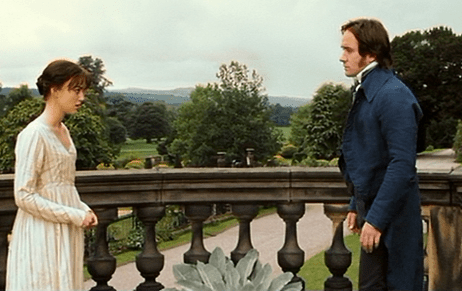
Lizzie and Darcy reflect the psyche’s struggle with pride, shame, and connection. (Pride & Prejudice (2005), Focus Features.)
Archetypes as Living Forces in Storytelling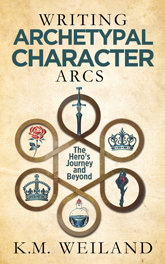
Writing Archetypal Character Arcs (affiliate link)
For writers, one of the most useful tools for enlivening the power of mythic storytelling is to access the innate power of character archetypes.
With all things archetypal, it is crucial to interact with archetypes not as simplistic stereotypes but as living forces. Put simply: we don’t get to dictate what archetypes do. When we have truly accessed them, they tell us what they will do. When we have truly understood them, we feel it all the way down to our bones. Archetypes are dynamic energies peopling initiatory arcs. They surface in different guises but always point to universal human epochs.
As writers, we can access these forces consciously to deepen our character arcs, themes, and story arcs. The most obvious way we can work with these archetypes is to learn about them through the old stories. But they are found everywhere. I would go so far as to say they are found in every story that works. More than that, they are inherent—if perhaps latent—within each of us.
As human beings (and especially as human beings with active imaginations), we already have a deep understanding and recognition of these archetypal forces—if we are brave enough to face them. This cannot be taken for granted. It can often feel much easier to ignore the call of initiation and transformation. Cutting the journey short before we finish the Dark Night of the Soul can often seem wiser. Ironically, remaining cozy and cynical in the affirming arms of despair can feel much safer than daring to keep walking into the unknown of transformation.
What archetypal storytelling—mythic storytelling—demands of us as storytellers is that we face the archetypes themselves with authenticity and with humility. Mythic storytelling demands that we listen to the deepest, loudest, softest truths within us. We know when what we are writing is mythic and archetypal—whether we call it that or not. We know when what we are writing is the truest thing it is possible for us to write. We know in our hearts. And I do not say “hearts” lightly. The heart is a much better storyteller than the head.
The head, however, remains a worthy ally on this journey. It is not, as it so often thinks, the protagonist. But it is a helpful sidekick. To that end, studying the mythic journeys in literature can be extremely helpful—whether the Hero’s Journey or the five further archetypal journeys I discuss in my book Writing Archetypal Character Arcs. (Writers can apply these insights practically through my Archetypal Character Arc Worksheets. This worksheet bundle is, in essence, a companion workbook to Writing Archetypal Character Arcs. If you’d like help charting any of the six archetypal character arcs—Maiden, Hero, Queen, King, Crone, and Mage—you can check out the worksheets I just released. If you want them all, be sure to check out the discounted bundle.)
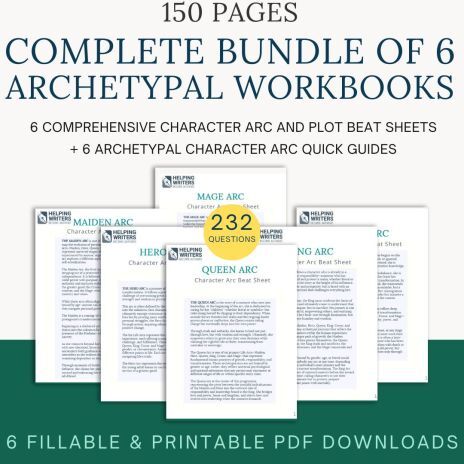
Story is not just “about life.” It’s a dream we dream together. It is a map for transformation. If we look into the past, history tells us our storytellers were our seers, our shamans, our wayshowers, our most respected elders.
Now, we are all storytellers. We all bear this great burden to look beyond what everyone else can see and to hone the transformative truths that are meant to initiate not just us but every member of our tribe.
To do that, we must start by remembering what story really is. It is not just entertainment. It is not just escapism. It is not just pleasure. It is not just a source of income.
What is story? I believe the archetypal shape of story is, fundamentally, a truth. Perhaps even the Truth. It is the power to change the world—over and over and over and over again. It is the power to change us. It is the power to bypass our limited egoic perceptions of ourselves, others, and our world and to show us into the wyrdest depths of what it means to be human. It is a dream we dream that also dreams us. It is initiation. It is transformation. It is change. It is myth.
Frequently Asked QuestionsWhat does it mean to say all stories are myth?It means that beneath every plot and genre lies a universal archetypal pattern. From epic fantasies to contemporary romances, all stories echo mythic structures that reflect the psyche’s journey of transformation.Can hyper-realistic stories still be mythic?
Yes. Even the most realistic fiction carries symbolic depth if the writer taps into archetypal storytelling. A courtroom drama or slice-of-life novel can still follow the mythic blueprint of initiation, transformation, and return.Why do archetypes resonate so deeply with readers?
Because archetypes are not stereotypes. They are living psychological forces. When writers use archetypal character arcs, readers feel as though they are watching their own inner conflicts dramatized on the page.How can writers use archetypal character arcs in their stories?
Writers can use arcs like the Maiden, Hero, Queen, King, Crone, or Mage as blueprints for character development. These journeys help ensure stories resonate with mythic power and emotional authenticity.In Summary
At their core, all stories are myth. No matter the genre or style, narrative always springs from the archetypal blueprint of the psyche. Story is not simply a mirror of everyday life but a symbolic map of transformation—a dream we dream together. When writers embrace this mythic foundation, they create stories that not only entertain but initiate both writer and reader into deeper self-awareness and lasting change.
Key TakeawaysAll stories are myth. Beneath plot and genre lies the archetypal blueprint of transformation.Story is psyche. Every character and force reflects a facet of the self.Archetypes are alive. They are not tropes but dynamic psychological energies.Hyper-realism needs myth. Realism alone risks losing depth; archetypal foundation restores resonance.Story transforms. Writers and readers alike undergo initiation through narrative.Want More?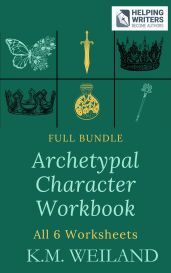
Archetypal Character Workbook (Full Bundle of 6)
If you’d like to put these insights into practice, explore my Archetypal Character Arc Worksheets—a series of six fillable, downloadable guides designed to help you chart mythic journeys for your characters. Each worksheet breaks down one of the six archetypal arcs—Maiden, Hero, Queen, King, Crone, and Mage–into structural beat sheets, reflective questions, and story prompts. Whether you’re writing epic fantasy or modern literary fiction, these tools will help you harness archetypal storytelling, deepen your characters, and unlock the mythic power within your narrative. Find the full set (including the discounted bundle) in my Etsy store.
Wordplayers, tell me your opinions! Do you see your own stories as mythic at their core? How do you think recognizing the archetypal foundation of storytelling might change the way you write? Tell me in the comments!Click the “Play” button to Listen to Audio Version (or subscribe to the Helping Writers Become Authors podcast in Apple Podcast, Amazon Music, or Spotify).
___
Love Helping Writers Become Authors? You can now become a patron. (Huge thanks to those of you who are already part of my Patreon family!)The post Why All Stories Are Myth—and How They Transform Us appeared first on Helping Writers Become Authors.
August 30, 2025
New Worksheets for Writers: Fillable PDFs to Spark Your Story
Sometimes the “quick little projects” are the ones that surprise me the most! Back in the spring, I thought it might be fun to put together a few simple printable writing worksheets—something light and easy, just a side project before the second edition of my Structuring Your Novel Workbook comes out this October.
Of course, you know how that goes.  One idea led to another, and before long my “tiny project” turned into a whole collection of 20+ digital writing resources. And honestly? I had a blast making them. (Seriously. I had to make myself stop!)
One idea led to another, and before long my “tiny project” turned into a whole collection of 20+ digital writing resources. And honestly? I had a blast making them. (Seriously. I had to make myself stop!)
Now, after months of work, I’m excited to share them with you!
Why I Created These Worksheets for WritersWhen I was in grade school, I had a “Write Your Novel” kit that came with worksheets. I can still remember how excited I felt sitting down with those pages—answering questions, filling in blanks, and dreaming up characters and stories. Secretly, that early love of worksheets has never left me. To this day, I still find them ridiculously fun.
Of course, worksheets should never be about ticking off boxes or forcing your story to fit into rigid rules. Writing begins and ends as discovery. But sometimes we all hit blind spots:
An arc that feels flatA theme that won’t come togetherA character who just isn’t coming aliveThis is where worksheets shine. Worksheets are tools to help you spark fresh insight, troubleshoot weak spots, and unlock ideas you didn’t know you had.
My goal was to design practical, easy-to-use tools that:
Give you direct access to the writing techniques I teachSpark new insights into your characters, themes, and plotsOffer flexible, fun ways to brainstorm and outline your storiesWhether you’re working on a novel, screenplay, or even an RPG campaign, these fillable PDF worksheets for writers are designed as creative companions for your storytelling journey.
 Browse the entire collection of 20+ worksheets here: [Grab the Worksheets!]
Browse the entire collection of 20+ worksheets here: [Grab the Worksheets!]
If you’re not sure where to start, I’d recommend checking out two special bundles:
The Archetypal Character Arc Cheat Sheets – Provides quick-glance guides to all six of the major archetypes in the Archetypal Life Cycle. For those of you have been asking, this is really a companion workbook for Writing Archetypal Character Arcs . (And, who knows, if you love the digital worksheets, my next project may be collecting them into a paperback!) The Enneagram Character Arc Cheat Sheets – An 18-worksheet collection for creating powerful arcs (both Positive and Negative) for all nine personality types.Both bundles are steeply discounted so you can grab them at the best value, rather than purchasing each worksheet individually.
After that, here are a few standouts I think you’ll love:
Character Interview Worksheet – 100+ questions to dig deep into your protagonist’s psychology, habits, and quirks. Perfect if you want to truly know your character inside and out. Supporting Character Interview Worksheet – 30 targeted questions for side characters, because your story world comes alive only when all the characters feel real. Character Arc Quick Guide – Beat sheets for all five major arc types (Positive, Flat, Disillusionment, Fall, and Corruption). A handy way to clarify your character’s journey at a glance. Story Structure Beat Sheet – A step-by-step breakdown of the classic seven-beat structure. Use it to tighten pacing or map out missing beats. Theme Worksheet – A 12-page guided exploration of your story’s thematic heart, with resources on character arcs, core elements, and dozens of bonus links.What’s Inside the Worksheets for Writers (The Bonuses!)These aren’t just worksheets—they’re mini writing toolkits. Each one comes with an extensive PDF resource guide packed with links to my most helpful blog posts, podcast episodes, and free tools. That way you can dig deeper into the craft while putting ideas directly into practice.
You’ll also find extras like:
Quick-reference infographics to keep story structure principles at your fingertipsExpanded guidance for flexible worksheet useTips and curated examples to inspire your processSince this is a brand-new launch, your support means so much! You can purchase the worksheets directly from my store, but I’d especially appreciate if you order through my Etsy shop. Every purchase there helps me build credibility and visibility on the platform.
And if you find the worksheets helpful, leaving a quick review on Etsy would be an enormous help in boosting the shop’s ranking!
I made these worksheets with you in mind, and I hope they give you the same spark of excitement I felt while creating them. I can’t wait to see what stories they help you bring to life!
 Explore the new worksheets here: [Worksheets Here!]
Explore the new worksheets here: [Worksheets Here!]
The post New Worksheets for Writers: Fillable PDFs to Spark Your Story appeared first on Helping Writers Become Authors.
August 25, 2025
What’s Happened to Modern Storytelling? (+ 6 Ways Storytelling Can Find Its Soul Again)
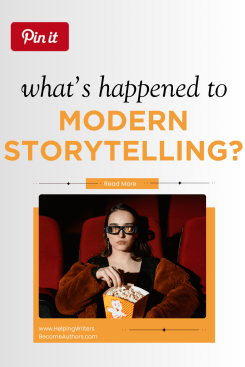 I’ve been feeling it for a while now—that dull, uninspired thud when the credits roll on modern storytelling. More and more, movies in particular leave me feeling unmoved and oddly detached. Bored, really. Once upon a time, I’d walk out of the theater buzzing. I’d carry that story around with me for days, sometimes weeks. I called it a “story high.”
I’ve been feeling it for a while now—that dull, uninspired thud when the credits roll on modern storytelling. More and more, movies in particular leave me feeling unmoved and oddly detached. Bored, really. Once upon a time, I’d walk out of the theater buzzing. I’d carry that story around with me for days, sometimes weeks. I called it a “story high.”
Now? More often than not, I’ve forgotten the movie by the time I reach the parking lot. Actually, most of the time I’m lucky if I remember whatever it was I watched on Netflix last night.
I keep asking myself, “Is it me who has changed?” Because God knows I have. This past decade has transformed almost everything about my life, including my relationship to my own storytelling. So perhaps what I’m experiencing is just “taste drift.” Or has something in the very DNA of our storytelling shifted? Is the drift I’m feeling really that the tilt toward spectacle, franchise maintenance, and safe, surface-level beats has taken all the magic with it?
I’ve been pondering this for a long time now, and I’ve been dancing around this post for a while too—wondering if it’s too shaded by my own subjectivity or, perhaps more tellingly, my own nostalgia and idealism. But you know what? I’m just gonna say it: I miss the way movies used to be.
I’m tired of feeling bored by something that used to delight me to no end. I’m sick of feeling a lack of engagement. I’m exhausted by the magnetism movies fail to hold for me. I used to get butterflies watching movie trailers. Now sometimes I can’t even be bothered—because even if the trailer looks good, will the movie really live up to expectations? Do I really even have expectations any longer???
The bottom line is this: it’s been a long time since more than the occasional and very random new movie (and I’m lumping in all TV and streaming content here) actually made me feel something. I know it’s not just me, because when I go back to the oldies, the difference is palpable. And in my very subjective opinion, it’s time we got back to telling stories the way we used to.
In This Article:What’s Happened to Modern Storytelling?The Impact Movies Have on BooksThe Storytelling Cycle 1970–20256 Qualities Storytelling Is Ready to See AgainWhat’s Happened to Modern Storytelling (Especially Movies)?Well, COVID happened, social media happened, streaming happened, the writers’ and actors’ strikes happened. All those things have massively affected the bottom line of how this very expensive medium is constructed to reach its audience.
But you know what? I don’t even think that’s really it.
When I examine the filmmaking landscape of the last 10–20 years in comparison to the decades that came before, what jumps out at me is the tone.
For a long while now, so much of what we’re offered to consume as storytelling audiences has been overlaid with tones of:
SnarkIronyMeta-commentaryHyper self-awarenessNihilismDeconstructive narrativesNow, admittedly, we’re living in an era of deconstruction, and I don’t necessarily see that as a bad thing. Cycles are made to turn. We need the sour with the sweet. We need the bracing cold against the lazy warmth. Idealism needs a sharp shot of cynicism every now and then. But by that same principle, cynicism eventually needs idealism to take its shot right back. Just as we cannot construct endlessly, neither can we deconstruct ad infinitum.
The Impact Movies Have on BooksBefore I go on, let me say a word about our other important storytelling medium: books. Most specifically in this post, I am referencing the current filmmaking culture in the U.S. However, because of the undeniable influence this visual media has on art of all kinds, we can’t fully separate its struggles or trends from those we find in literature.
In no small part, writing is “monkey see, monkey do.” Even those of us writing novels and short stories are inevitably influenced not just by the books we read, but I would argue perhaps even more so by the visual media we consume. Visual media is not only pervasive, it’s also unparalleled for its memorability. I suppose this is particularly true for visual learners. Speaking for myself, I can say with certainty that the visuals I consume are perhaps the single greatest influence on my storytelling.
More than that, as a comparatively snack-sized consumable, movies and even limited series are, in my opinion, unquestionably the greatest influence upon storytelling structure and techniques for modern writers. In short, what begins in the movies will eventually affect literature.
That said, I don’t feel these concerning trends are as obviously prevalent in literature as in film. Part of the reason for this is that salable literature is a vast landscape in comparison to salable visual media. Mostly, this is because the stakes aren’t as high. Strictly speaking, it costs nothing to create a book in comparison to the staggering millions dropped on visual spectacle. This alone makes books a far more forgiving medium in which to experiment and stretch the bounds of convention or audience expectation.
The book-reading experience can also be much more subjective in its personalization. People are far more likely to be watching the same movies and shows than they are to be reading the same books. Those books we have all read—whether classics or bestsellers—have sometimes been baptized in the fires of public scrutiny a bit more thoroughly than the latest film we’ve “all” seen.
So with all that said, although my own recent experiences with modern novels have been largely more positive than with modern movies, the general downturn in the filmmaking industry certainly crosses over to some extent—making these concerns more about “storytelling” in general than simply “filmmaking.”
The Storytelling Cycle: 1970–2025
Click for larger view.
Although I am undeniably nostalgic for the movie landscape of my teenage and young adult years, the changes I’m picking up on point to more than just that. If we look back just fifty years or so, at the overall storytelling cycle, we can see a clear oscillation:
1970s – Grit & DisillusionmentTone: Cynical realism, moral ambiguity, personal stories.
Examples: The Godfather, Taxi Driver, One Flew Over the Cuckoo’s Nest
Drivers: Post-Vietnam, Watergate, social upheaval. Audiences suspicious of authority. Anti-heroes dominate.
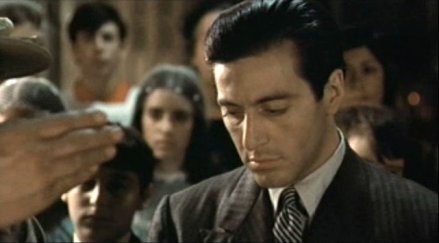
The Godfather (1972), Paramount Pictures.
1980s – Mythic Optimism & Pop EscapismTone: High-concept, archetypal, sincere adventure.
Examples: Star Wars, E.T., Back to the Future, The Princess Bride
Drivers: Blockbuster economics, Reagan-era optimism, VFX advances. The rise of the Hero’s Journey as mainstream glue.
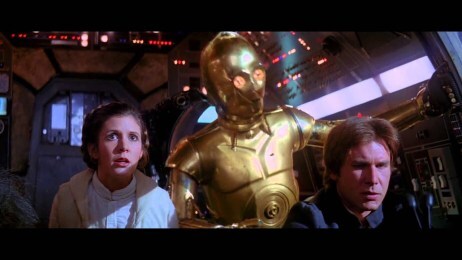
Star Wars: The Empire Strikes Back (1980), 20th Century Fox.
1990s – Irony & DeconstructionTone: Quirky realism, meta-humor, genre-bending.
Examples: Pulp Fiction, Fight Club, The Matrix, The Truman Show.
Drivers: Post-Cold War uncertainty, Gen X skepticism, indie boom. Themes interrogate reality and authenticity.
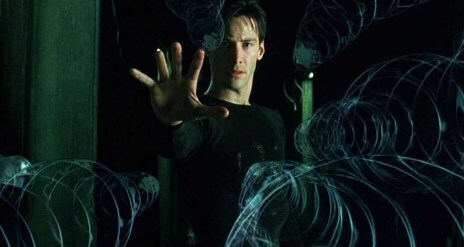
The Matrix (1999), Warner Bros.
2000s – Earnest Epic ResurgenceTone: Sweeping, sincere myth for a new millennium.
Examples: The Lord of the Rings, Harry Potter, Gladiator
Drivers: Pre-/post-9/11 yearning for unity, moral clarity. Large-scale adaptations brought back allegory and grand stakes.
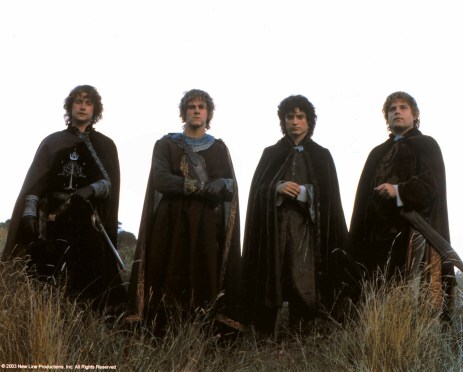
The Lord of the Rings: The Return of the King (2003), New Line Cinema.
2010s – Meta-Franchise EraTone: Connected universes, quippy self-awareness, formula mastery.
Examples: MCU Phases 1–3, Frozen, Game of Thrones.
Drivers: Social media feedback loops, globalization, IP exploitation. Themes (and conclusive arcs) are often secondary to brand continuity.
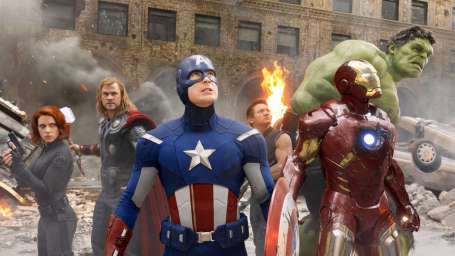
The Avengers (2012), Marvel Studios.
2020s – Saturation, Fragmentation, & CautionTone: Brand maintenance, “safe” messaging, heavy serialization, frequent irony to preempt critique.
Examples: MCU Phase 4, Disney’s Star Wars, Rings of Power, The Witcher, Disney’s live-action reboots.
Drivers: Pandemic shifts viewing habits, political polarization, streaming war economics, strikes. Thematic depth appears in pockets (e.g,. Dune), but most mass-market fare is either spectacle-first or message-first.
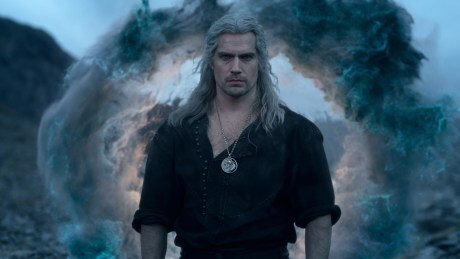
The Witcher (2019-), Netflix.
6 Qualities Storytelling Is Ready to See AgainSo are we at the end of the current cycle? Are we ready for a resurgence of idealism, hope, wonder, and optimism? Hard to say. Ultimately, I believe these things take as long as they need to take to work their archetypal and energetic perogatives within the overall cycle. But, personally, I think we’re ready. I think it’s time. God knows I’m ready for it as a viewer. More than that, I know this is what I want to write. If I get to have a contribution to the never-ending story of this cycle, then I know this is what I want it to be.
If you’re ready to hop on this train as it’s getting ready to leave the station, here are six qualities I think it’s past time we bring back to mass media.
1. Subtext, Metaphor, and Allegory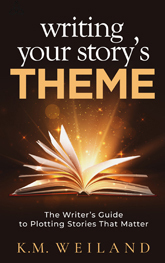
Writing Your Story’s Theme (Amazon affiliate link)
If I think about one element that is the hallmark of every movie I’ve ever loved, it’s this: it’s subtext. So much of we’re seeing today is either on-the-nose or deliberately subverting its own subtext to create meta references or irony. Story’s richest depths live in subtext. The best stories are about more than just the text. Their subtext offers thematic symbolism with the capability of turning even the simplest story into something deep and true. This is the power of allegory. It is the power of thematic metaphor. Even though all stories offer the potential for this, it actually takes a tremendous amount of courage for a storyteller to resist the urge to simply spell it all out.
When I speak about this, I think about movies like The Legend of Bagger Vance, The Lion King, and Forrest Gump. But even obviously blockbuster stories such as Jurassic Park and The Terminator elevate themselves into timeless and unforgettable experiences through their subtextual expertise. This stands in such blatant contrast to their resurrected franchise sequels—most of which, despite all their bling, are heartless, soulless, and (because you don’t get the first two without this one:) brainless.
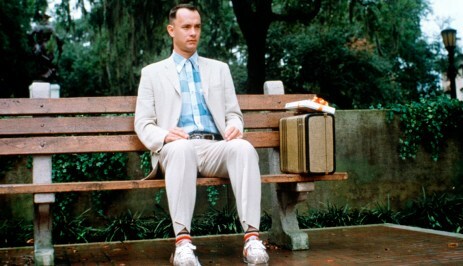
Forrest Gump (1994), Paramount Pictures.
2. Mythic Structure and Archetypal Resonance
Writing Archetypal Character Arcs (affiliate link)
Mythological and archetypal underpinnings lay the foundation for stories of effortless truth. They point to what is most real, and they supply the kind of symbolism that takes audiences deep without even trying. Solid plot structure and character arcs start this off (as they are themselves rooted in myth and archetype), but there is so much more depth we can explore.
It’s true the old stories need to reinvent and resurrect themselves from time to time—or more strictly, culture needs to reinvent its relationship to these stories. We can get so close to them, we begin to think they are “tame lions” and we forget that what they really represent is something terrifyingly beautiful in its raw and primal power.
Our relationship to these structures evolves. But really it is us who evolves more than the structures themselves. I was reminded of this in recently viewing StudioBinder’s excellent retrospective of the Hero’s Journey (in which I was honored to appear):
It is arrogance that lets us think, in all our perky snark and world-weary cynicism, that we write the stories. No, the stories write us. We forget that at our peril, and as storytellers we, above all, safeguard the chthonic depths of our deepest, most terrifying, and most transcendent truths.
The great myths of our age have been movies (either first or perhaps most prevalently): Star Wars, Lord of the Rings, Harry Potter. And they have changed us utterly. For this reason, if no other, I will never be content with even one single story that does not confront me, does not make me feel something, does not transform me.
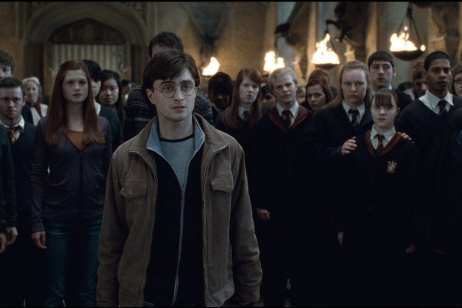
Harry Potter and the Deathly Hallows – Part 2 (2011), Warner Bros.
3. Emotional Sincerity, Vulnerability, and EarnestnessThis one isn’t always popular. But, honestly, I feel the truth of it deep in my bones: we are missing stories that confront us with emotional sincerity, with vulnerability, and, yes, with earnestness. We’re so jacked on sarcasm and skepticism. Perhaps it began as a tool to transform structures that had seen their day. But now, it’s starting to feel like a defense we’re just hiding behind.
There’s no hiding from hope—the hope that we will be seen, accepted, loved—not for who we are supposed to be, but just as we are in all our messy glory. Think about how hard it is to show up with your heart in your hand.
Although we certainly do see many films these days striving for this (and kudos to them), I can’t help feeling many are still hiding a bit behind their own weariness and tragedy. Sometimes simplicity and innocence and even happiness can feel the most vulnerable of all. I’m thinking of films like Big and Ferris Bueller’s Day Off. These are simple—and in some ways very disruptive—comedic romps that reach far beyond themselves through their willingness to show up in the full earnestness of the human capacity for hope and faith.
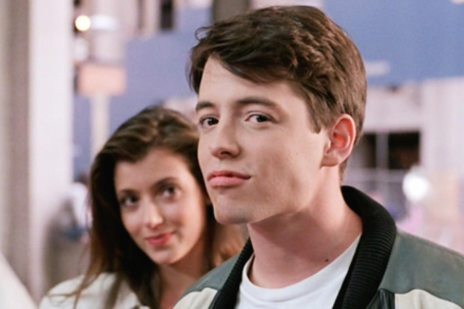
Ferris Bueller’s Day Off (1986), Paramount Pictures
4. Moral Clarity (With Nuance)Oh, yes, movies today have a certain moral clarity. At least, they like to tell you exactly what they think (see above about no subtext) and probably exactly what you should think too. Examples abound, from all perspectives. And, frankly, they’re all bad. But then we’ve also got a lot of post-modern confusion going on, and literally a slew of stories whose ambiguity leaves you wondering at the end if there even was a thematic message.
I’ve always liked to say, “Stories are better as questions than as answers.” I still stand behind that. Heavy-handed moralism goes hand in hand with no subtext, and it never works out well. But that doesn’t mean stories can’t (and shouldn’t) have something to say and to say it with all the conviction and nuance they can muster.
Think about Schindler’s List, Amadeus, every John Hughes film ever made, even Bill and Ted’s Excellent Adventure for crying out loud. These stories know what they are and what they’re trying to say about the world. They say it with assurance, and they offer the package up for us to have our own experiences and make our own judgements.

Schindler’s List (1993), Universal Pictures.
5. Joy and Wonder
Here’s another one that isn’t always praised in our modern film-going culture. But, by God, we need it. Of late, we have been in a time and a place where we have needed to stare down our shadows. But I think it’s time to remember why. Why do we face our shadows? What’s the point? Why is it worth it?
Every story faces its Point of No Return, its Moment of Truth, and its Dark Night of the Soul so it can emerge at the end transformed. The shadow transformed is always light.
I mentioned at the beginning of the article that it’s been a while since I’ve seen a film that really made feel something. If I’ve felt anything at all, it was probably some type of catharsis—grief, anger, shock, disgust. It’s been much longer since a film has taken me to that place of joy and wonder—that revelry just in being alive.
Star Wars did that for me, some of the early MCU movies did that, Secondhand Lions always does that. But these stories don’t have be romps. Joy is always waiting for us at the end of It’s a Wonderful Life, just as wonder waits for us at the end of Princess Mononoke.

It’s a Wonderful Life (1947), Liberty Films.
6. Goodheartedness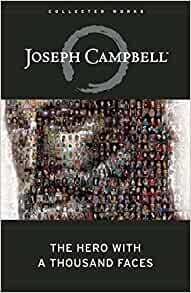
The Hero With a Thousand Faces Joseph Campbell (affiliate link)
Finally, I am reminded of what Joseph Campbell had to say about the quality of goodheartedness as a necessary quality of anyone who would succeed upon the Hero’s Journey. He spoke of the Irish folk hero Niall, who won his crown through the simplicity of goodheartedness as demonstrated in his kindness to a seeming old crone who was then transformed into the beautiful archetypal force capable of granting him the “Royal Rule.”
Now, don’t get me wrong. I am a friend to the shadows. I believe wholeheartedly in the necessity and courageous importance of facing our shadows—which, in so many ways, is what we are being called upon to do in this moment in time—and reintegrating them into a greater wholeness. All stories reflect humanity’s never-ending struggle with this transformative process. Some parts of the storytelling reflect one aspect; some another.
But even in the midst of our darkest shadow work, may we never forget the crucial piece that is goodheartedness. As storytellers, we bear the great burden of the world’s catharsis—the grief, the anger, our most violent and abhorrent proclivities. But part of that, too—and I would say the most important part—is also the tether to something deeper and truer and better and kinder.
May we write stories like Lord of the Rings and Anne of Green Gables and The Breakfast Club and E.T. and Little Women and Star Wars and Driving Miss Daisy and Harry Potter and Groundhog Day. May we write stories about the heroes we wish we were, the compassion we wish we had, the courage to transform, and the supreme gratitude with which to accept all the glory that is life.
Those are the movies I want to watch again. That’s how you put the whole world on a story high.
In Summary: Why Stories Must Find Their Heart AgainOver the past fifty years, storytelling has swung like a pendulum—from grit and cynicism to myth and wonder, and back again. Right now, we’re in a season of fragmentation, irony, and surface-level spectacle. But history suggests the cycle always turns. What’s missing today (and what audiences are aching for) is a return to sincerity, subtext, allegory, and stories that dare to make us feel something real.
Key TakeawaysModern movies often feel hollow because spectacle has replaced subtext.Storytelling moves in cultural cycles: grit → myth → irony → sincerity.We’re likely on the cusp of another turn toward earnest, mythic storytelling.Writers and filmmakers can be part of that shift by embracing sincerity, allegory, and goodheartedness.Want More?If this resonates, check out my Shadow Archetypes email course. Over eight weeks, we’ll explore the passive and aggressive shadow polarities of the six main archetypes in the Archetypal Life Cycle. It’s a deep dive into how the darker sides of our characters (and ourselves) shape narrative truth. You can sign up here.
Wordplayers, tell me your opinions! What do you think happened to modern storytelling? Do you feel the same hollow note I’ve described, or do you think the magic is still out there if we just know where to look? Tell me in the comments!Click the “Play” button to Listen to Audio Version (or subscribe to the Helping Writers Become Authors podcast in Apple Podcast, Amazon Music, or Spotify).
___
Love Helping Writers Become Authors? You can now become a patron. (Huge thanks to those of you who are already part of my Patreon family!)The post What’s Happened to Modern Storytelling? (+ 6 Ways Storytelling Can Find Its Soul Again) appeared first on Helping Writers Become Authors.
August 18, 2025
Writing Better Character Conflicts With the 5 Conflict Management Styles
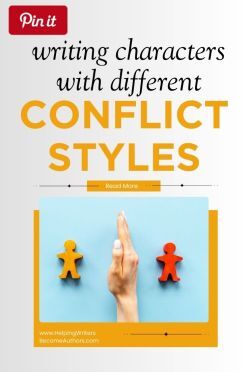 Note From KMW: Before we get started today, I just wanted to let you know that this weekend, I’m excited to be sharing a presentation at the WorldShift: The Speculative Fiction Writers’ Summit 2025. This is a free, 4-day online event packed with workshops on character, worldbuilding, plotting, publishing, and more from 30+ writing experts. Whether you write speculative fiction or not, you’ll walk away with tools you can use in any story. You can grab your free ticket here: Join the Summit.
Note From KMW: Before we get started today, I just wanted to let you know that this weekend, I’m excited to be sharing a presentation at the WorldShift: The Speculative Fiction Writers’ Summit 2025. This is a free, 4-day online event packed with workshops on character, worldbuilding, plotting, publishing, and more from 30+ writing experts. Whether you write speculative fiction or not, you’ll walk away with tools you can use in any story. You can grab your free ticket here: Join the Summit.
***
In fiction, every clash between characters comes down to a conflict management style. This is true whether you’re writing a heated argument or a quiet standoff. In real life, psychologists group these into five main approaches: competing, collaborating, compromising, accommodating, and avoiding. Understanding how each works can help you write richer, more realistic character conflicts.
It is a common axiom in the writing world that conflict drives story. Although the simplicity of this advice is necessarily limited, what it means is that plot is created from a series catalysts that cause characters to respond. Basically: cause and effect.
This is what then creates the chain of story events (aka, scenes) that engenders the larger story. At its simplest, story conflict is nothing more or less than some kind of obstacle interfering with a character’s forward progression. That said, the word “conflict” itself does tend to most readily connote interpersonal conflict—whether in the form of a fistfight or a passive-aggressive argument. Indeed, most people find this aspect of conflict to be the most obviously entertaining and useful for plot, since it tends to inherently combine all three of a story’s major engines: plot, theme, and character.
This means that much of what writers need to know about conflict in general comes down to character conflicts. The more nuanced your characterizations, the more interesting the conflict will be and the more realistic and compelling your characters will be.
So how do you create nuanced character conflict?
One way is to study and understand conflict management styles. If you can figure out which conflict management styles best fit your characters, you not only have the opportunity to create instantaneously complex relationship dynamics (since every character’s approach to conflict will be different), but also conflict that naturally arises from the management styles themselves (e.g., characters with opposing styles can sometimes spark conflict just because they clash with each other’s approaches).
In This Article:Take the Test: What Are the 5 Conflict Management Styles?Using the 5 Conflict Management Styles to Build Character ConflictThe Competing Style: High-Stakes ShowdownsThe Collaborating Style: Win-Win SolutionsThe Compromising Style: Meeting in the MiddleThe Accommodating Style: The Peacemaker’s PathThe Avoiding Style: Delaying the BattleTips for Mixing Conflict Styles in Your StoryTake the Test: What Are the 5 Conflict Management Styles?The idea of five distinct conflict management styles comes from the Thomas-Kilmann Conflict Mode Instrument (TKI), developed in the early 1970s by psychologists Kenneth W. Thomas and Ralph H. Kilmann. Originally designed for workplace and organizational settings, the model maps how people handle conflict along two dimensions: how a person pursues one’s own goals (i.e., a spectrum of unassertiveness and assertiveness) and how one considers others’ goals (i.e., a spectrum of uncooperativeness to cooperativeness). From there, they used these two axes to map five core approaches to conflict: competing, collaborating, compromising, accommodating, and avoiding.
To discover which style best fits your characters (and yourself!), you can purchase the official test here. Below is a short version that can get you started by giving you the general idea:
Character Conflict Style QuizDiscover how your characters naturally handle disagreements, tension, and power struggles. Start by choosing a single character you want to assess. For each statement below, imagine how this character would respond in a variety of situations (e.g., with friends, rivals, strangers, etc.).
Rate each statement on a scale of 1–5:
1 = Strongly Disagree
2 = Disagree
3 = Neutral / Sometimes True
4 = Agree
5 = Strongly Agree
At the end, follow the scoring guide to discover your character’s dominant conflict style(s).
The StatementsMy character pushes hard for his/her own way, even if it risks upsetting others.My character seeks solutions that work for everyone involved in the disagreement.My character will give up part of what he/she wants if it helps resolve the conflict.My character often lets others have their way to keep the peace.My character avoids bringing up issues unless there’s no other choice.My character enjoys finding creative solutions in which everyone feels satisfied.My character is willing to settle halfway if it ends the argument quickly.My character puts the other person’s needs first when harmony matters most.My character changes the subject or withdraws to avoid escalation.My character insists on his/her own position, believing he/she’s right.ScoringAdd the scores for each style category:
Competing = Q1 + Q10Collaborating = Q2 + Q6Compromising = Q3 + Q7Accommodating = Q4 + Q8Avoiding = Q5 + Q9Highest Score → This is your character’s dominant style in conflict.
Close Second(s) → These could be secondary style(s) your character may use in certain situations.
Lowest Score(s) → These are the styles your character is least likely to use.
Use the dominant style to shape your characters’ dialogue, body language, and choices in tense scenes. From there, you can play with your story’s conflict by putting your characters in situations that force them into their weakest styles. Not only does this usually create more conflict, but it’s great for growth arcs and plot twists. Also, look for ways to combine different styles in ensemble casts to create natural friction between characters.
Understanding conflict management styles for your characters can provide a solid foundation that influences many aspects of your story. This lays the groundwork for realistic personalities, while also contributing to how you manage each scene’s tension, pacing, and tone. It will influence how character relationships play out, and—since this is usually the heart of any story—from there it can end up creating the plot all by itself.
If you realize any one character lacks a strong conflict style and/or many of your characters share the same style, you can easily troubleshoot for a stronger narrative by mixing things up or strengthening the accuracy and consistency of how a particular conflict style is showing up in your story.
Using the 5 Styles Conflict Management Styles to Build Character ConflictLet’s take a deeper look at each of the five styles and how each one might show up in your fiction.
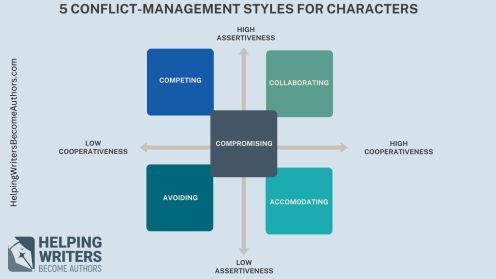
5 Conflict Management Styles for Writers Graph (click for larger view).
1. The Competing Style: High-Stakes ShowdownsCharacters with a Competing style go all in to get what they want. They score high in both assertiveness and uncooperativeness, which means they tend to prioritize victory over relationships. This can be a great way to raise the stakes, since it creates scenarios with clear winners and losers.
Although these characters often come across as selfish, they can also be excellent leaders since they are ultimately all about efficiency. Their focus is entirely on getting results, which can actually be on behalf of someone else (i.e., protecting or providing for the group) even if relationships are often not factors in the decision making.
For Example:
Miranda Priestly in The Devil Wears Prada relentlessly pushes her own agendas, regardless of how it impacts others. When she demands Andrea obtain an unpublished Harry Potter manuscript for her twins, Miranda exerts total control, making it clear her needs come before anyone else’s.
The Devil Wears Prada (2006), 20th Century Fox
Captain Ahab in Moby-Dick obsessively pursues his own goal (killing the whale), even at the cost of his crew’s safety. He rallies the crew to join his hunt for Moby-Dick, overriding the ship’s original mission and dismissing the first mate Starbuck’s concerns.
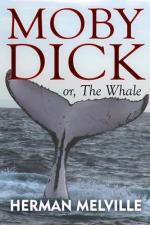
When two characters team up to find a solution that works for everyone, they’re Collaborating. Unlike the Competing style, the Collaborating style can often serve to strengthen connections even while highlighting differences. Like Competitors, Collaborators score high in assertiveness. They’re there to get the job done, but because they also score high in cooperativeness, they wish to do so in a way that doesn’t clearly define themselves as winners and everyone else as losers.
These characters make great leaders, although usually more heart-based than the head-based Competitors. Sometimes their downfall can be trying to make situations work for everyone when that isn’t possible or desirable (which can ironically cause everyone to “lose”).
For Example:
As she becomes a leader, Moana works to find solutions that honor her people’s traditions while also solving their urgent needs. When she realizes the antagonist is actually the goddess Te Fiti, Moana does not seek to defeat her, but rather restores her heart, resolving the conflict in a way that benefits everyone.
Moana (2016), Walt Disney Pictures.
Atticus Finch in To Kill a Mockingbird strives to seek truth and fairness by balancing empathy with justice and involving others in the moral conversation. During his courtroom defense of Tom Robinson, he appeals to the jury’s conscience and shared values in an attempt to gain a resolution that serves both justice and his community’s moral integrity.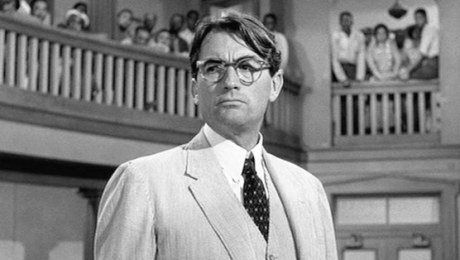
To Kill a Mockingbird (1962), Universal Pictures.
3. The Compromising Style: Meeting in the MiddleThis style desires both sides to give a little and meet in the middle. Compromisers tend to create a partial resolution that still leaves some tension in play. Compromisers ride the middle of both axes—assertiveness and cooperation—landing somewhere betwixt and between. Because they lack as much assertiveness as Competitors and Collaborators, they tend to fill leadership roles only reluctantly and in the absence of someone more decisive. This isn’t necessarily because the more decisive types are better leaders, but because those types can sometimes fill the role faster, while the Compromising type is still examining all the options.
The Compromising style can often lend itself to indecision. Because their greatest desire is for everyone to be happy, they can get stuck in pursuit of an impossible ideal. They can be frustrating to both assertive types, but offer valuable and necessary perspectives.
For Example:
Marty McFly in Back to the Future consistently seeks middle-ground solutions to avoid outright confrontation, like persuading George to stand up to Biff so he doesn’t have to directly fight Biff himself, or finding a way to get the time machine running without demanding perfection from Doc.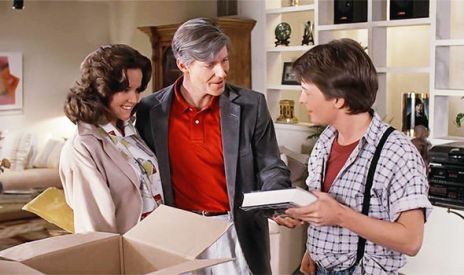
Back to the Future (1985), Universal Pictures.
Katniss Everdeen in The Hunger Games often negotiates partial agreements with allies (like Peeta or Haymitch) to survive, while still holding to her values. Although she will fight if pushed (indicating a secondary conflict style), she generally prefers to find workaround solutions.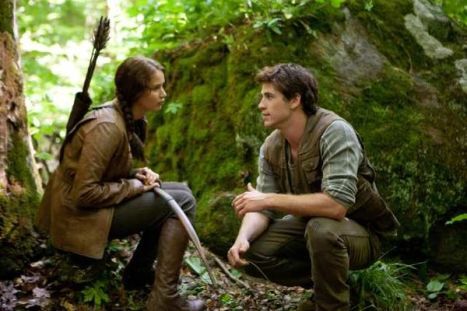
The Hunger Games (2012), Lionsgate.
4. The Accommodating Style: Seeking PeaceSometimes a character will give in to keep the peace, a choice that can alternatively reveal loyalty, fear, or quiet acts of self-sacrifice. This conflict style scores low in assertiveness and high in cooperativeness. Although this style often lends itself to characters who can get run over by more assertive types, it also represents the most empathetic of the five. This is usually a person who is highly tuned in to others.
However, their conflict aversion can make it difficult for them to get what they want or to pursue (or sometimes even acknowledge) their own desires. If they don’t have a strong secondary style to help them out, they can (ironically) struggle to create enough conflict to drive the plot.
For Example:
Samwise Gamgee in The Lord of the Rings shows Accommodating tendencies in his dedication to putting Frodo’s needs and safety above his own desires, even when it’s hard, such as on Mt. Doom when he gives Frodo the last of their water instead of taking it himself, prioritizing Frodo’s needs over his own survival. However, Sam also shows a strong secondary Competitive style, especially when confronting Gollum.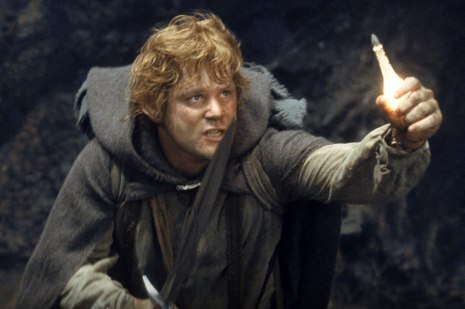
The Lord of the Rings: The Return of the King (2003), New Line Cinema.
Beth March in Little Women consistently yields to her sisters’ wishes in order to maintain family harmony, even at personal cost. For instance, when Meg is invited to a party, Beth encourages her to go even though it means Beth will left be alone.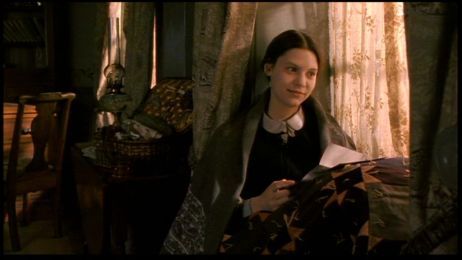
Little Women (1994), Columbia Pictures.
5. The Avoiding Style: Delaying the BattleFinally, instead of facing the issue, a character might dodge the conflict entirely. Although this can totally deflate a scene’s conflict, it can also lend itself to subtextual passive-aggression as the tension builds in the silence and unresolved emotions linger. Notably, although this type scores low in assertiveness, it scores high in uncooperativeness.
This style often lends itself to loner characters who prefer to go their own way rather than engage with others. It is separate from the Accommodating style in that it is more concerned with protecting itself than placating others. The true Avoidant style will also do almost anything to avoid conflict. It would rather slip away (either physically or by disassociation) than bond or fight in order to end the dispute.
For Example:
Christopher McCandless in Into the Wild consistently sidesteps the deep conflict of his strained family relationships, instead physically removing himself by leaving home and embarking on a solo journey into the wilderness. His avoidance defines not just isolated moments, but his entire approach to life’s tensions.
Into the Wild (2007), Paramount Vantage
Bruce Banner in The Avengers keeps a low profile in Calcutta, tending to patients and dodging any situation that might trigger his transformation. His alter-ego, the Hulk, of course, displays the opposite conflict style of Competitor.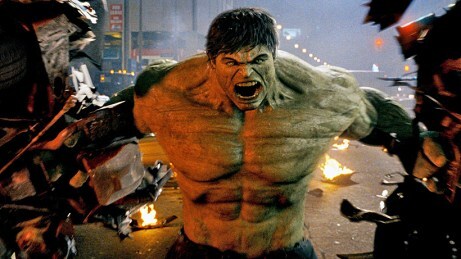
The Incredibles (2004), Walt Disney Pictures.
Tips for Mixing Conflict Styles in Your StoryAlthough most characters will demonstrate a primary conflict style, this doesn’t mean they can’t utilize secondary tactics as well. Usually, secondary tactics will represent a less well-developed (and therefore less “mature”) approach that kicks in when the primary style proves counter-productive.
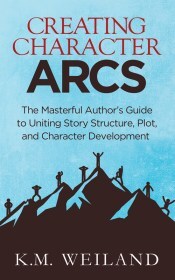
Creating Character Arcs (Amazon affiliate link)
You can use conflict styles as a central fulcrum in creating a character arc. For example, a character who relies exclusively on a Competing style might have to learn how to become less aggressive and more Cooperative. Likewise, as in Into the Wild, your story could focus on the dangers of taking any one conflict style to a tragic extreme.
One of the single best ways to utilize conflict styles in your story is to focus on the interplay between how the styles show up in different characters.
For Example:
Two Accomodating characters will probably cancel each other out, creating a scene that lacks conflict (and probably nobody getting what they want either).Two Competitive characters will be entertaining, but unless one of them arcs otherwise, their story will always end with clear winners and losers.Competitive and Collaborative leaders can create interesting stories that start with sparks and end with mutual growth.Compromising characters can often struggle in confronting other types, but offer both balanced perspectives and room for growth.With deep roots in psychology, conflict management styles make for powerful storytelling tools. By giving each character a clear, consistent approach to conflict, you can create authentic tension, natural relationship dynamics, and plot turns that feel inevitable. You may want to see your characters locking horns in a showdown or finding creative win-win solutions or slipping quietly out the back door. Whatever the case, the way they handle conflict will shape everything from pacing to theme. Mastering these five styles can help you write stories that feel more real, more layered, and far more compelling.
In SummaryThe five conflict management styles—Competing, Collaborating, Compromising, Accommodating, and Avoiding—offer writers a structured way to design believable interpersonal conflict. Each style is defined by how characters balance assertiveness (pursuing their own goals) and cooperativeness (considering others’ goals). Assigning conflict styles to characters adds depth, realism, and tension to your scenes and relationships. Going further, to mix different styles in your cast can then naturally generate friction and plot momentum. You can even shift a character’s style over time to create satisfying character arcs.
Key TakeawaysConflict drives story. Knowing your characters’ conflict styles makes that conflict richer and more organic.Different styles = different sparks. Pairing contrasting styles creates built-in tension, while matching styles can either cancel conflict or amplify it.Extreme reliance on one style can be a flaw that drives an arc or downfall.Use the Character Conflict Style Quiz to quickly identify how your characters approach disagreements.Incorporating real-world psychology models into fiction can boost authenticity and reader engagement.Want More?
Creating Character Arcs Workbook
If you’d like to take your character development even further, check out my Creating Character Arcs Workbook. Packed with guided exercises, prompts, and structure templates, it will help you chart your characters’ journeys from start to finish. It covers Positive Change Arcs, Flat Arcs, and Negative Change Arcs. Learn how to weave plot and character together seamlessly so every scene feels purposeful and emotionally resonant. It’s available in e-book and paperback.
Wordplayers, tell me your opinion! Which of your characters has the most clearly defined conflict management style, and how has it shaped relationships or the plot? Tell me in the comments!Click the “Play” button to Listen to Audio Version (or subscribe to the Helping Writers Become Authors podcast in Apple Podcast, Amazon Music, or Spotify).
___
Love Helping Writers Become Authors? You can now become a patron. (Huge thanks to those of you who are already part of my Patreon family!)The post Writing Better Character Conflicts With the 5 Conflict Management Styles appeared first on Helping Writers Become Authors.
August 11, 2025
How to Start Dictating Fiction (Even If You’ve Tried and Failed Before)
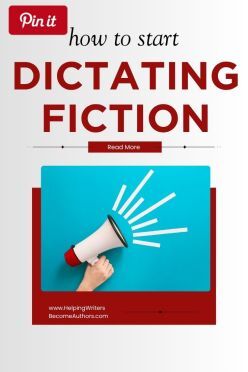 From KMW: I’ve always loved writing by hand. There’s something about the feel of pen on paper that just makes the creative process click for me, especially when outlining and brainstorming. However, between the wrist pain, bad posture, and the fact that I can’t read my own handwriting half the time, I’ll admit there are certain downsides—just as there are to typing. I’ve dabbled with dictation off and on over the years, but I always hit the same wall: it just didn’t feel like “real” writing. If I wasn’t typing or scribbling, was I actually creating?
From KMW: I’ve always loved writing by hand. There’s something about the feel of pen on paper that just makes the creative process click for me, especially when outlining and brainstorming. However, between the wrist pain, bad posture, and the fact that I can’t read my own handwriting half the time, I’ll admit there are certain downsides—just as there are to typing. I’ve dabbled with dictation off and on over the years, but I always hit the same wall: it just didn’t feel like “real” writing. If I wasn’t typing or scribbling, was I actually creating?
But as I read Sarah Elisabeth Sawyer’s guest post this week, I had to rethink that a bit. She breaks down some of the myths and mental roadblocks around dictating fiction in such a grounded, compassionate way that it made me realize something kind of obvious (but also kind of profound): storytelling was originally oral. We had voices and listeners long before we had keyboards or pens!
So if you’ve ever felt curious about dictation but haven’t been sure where to start (or, like me, have gotten frustrated after trying it), I think you’ll find Sarah’s approach refreshing. She’s been where you are, and she’s mapped out a path forward that’s both practical and encouraging. Enjoy!
***
Have you ever read about an author who dictates 5,000+ words while taking a walk and thought to yourself, “If dictation is so amazing, why isn’t everyone doing it?”
Maybe you’ve tried dictation. You opened a voice app, started talking, and… froze. It felt awkward. Disjointed. The transcription was a mess.
After working with hundreds of authors making the transition from typing to speaking their words of fiction, I know this story well. It was my story when I first tried dictation. And failed. Again and again.
Dictation is one of the most misunderstood tools for authors, yet one with potential for powerful transformation in your author life.
In This Article:4 Myths About Using Dictation to Write FictionHow to Get Started With Dictating (Even if You’ve Failed Before)The Next Step: Making Dictation Effortless4 Myths About Using Dictation to Write FictionAs someone who has dictated 14 books and trained hundreds of authors in how to dictate fiction, I want to say this: dictation isn’t a magic shortcut that will solve all your writing challenges. But it tackles a great many of them.
And dictation can absolutely be learned, just as you learned how to handwrite and type. I want you to get there without getting overwhelmed.
Let’s start by eliminating common myths around dictating fiction.
Myth #1: Dictation = Talking Fast = Writing FastWhen you think about dictation, speed is probably the first thing that comes to mind. Speed is what drew me and countless authors to give it a shot.
Dictation can help you draft faster. I doubled my writing speed from 1,500 words of fiction per hour to 3,000 words, and with less strain on my body.
But when you only see dictation as a way to supercharge your productivity, you might experience frustration and even disappointment before you’ve trained yourself to do it well.
Dictation isn’t a race to speak as fast as you can. I talk slower when dictating fiction than when I’m having a conversation.
If you find yourself slowing down to dictate, that’s normal. In fact, I encourage it. Take your time. Pause. Breathe. When you’re ready, tackle the next sentence.
Speed will come with practice.
But dictation isn’t just writing faster. There are health benefits since dictation frees you from your desk.
It can also help you break through mental blocks around your plot, develop better dialogue, and get words squeezed into the little spaces of life: doing the dishes, sitting in the car pool line, or walking the dog.
While dictation can lead to faster drafts, I’ve seen these other benefits outweigh speed.
Myth #2: “I Tried Dictation, It’s Just Not for Me.”This is the one I hear most. It was the myth that held me back for years.
Maybe you tried dictation while walking. Or you spoke your story into your phone one morning and felt completely disconnected from the words. Maybe the transcription came back such a mess, you decided it wasn’t worth the hassle.
I hear you. My first shot at dictation, I thought I was on to something. In 2013, I posted on social media how I dictated a few words of fiction, and how it could be epic. And it was.
An epic failure.
I couldn’t get past the mental and technical hurdles of speaking my words instead of typing.
I went through it all: staring at a blank screen with an equally blank imagination. I stumbled over words, dreaded hearing my voice, and had no idea how to clean up my transcriptions.
I didn’t know what I was doing and made a mess of everything.
Dictation just wasn’t for me.
But then I realized something: I needed to train myself to dictate just like I trained myself how to type. You need to dig new neural trenches in your brain to allow the words to flow through your mouth as naturally as your fingertips.
I came back to dictation in 2020. I released the pressure on my brain to dictate fiction. I started practicing by dictating my morning pages and text messages. Then I experimented with apps and methods until I found what worked for me. I stopped expecting it to immediately “feel right.”
Slowly, it started to work. I found my rhythm. I dictated a full (backstory) scene. Then a full chapter. Then a full novel.
Now, dictation is how I write my first drafts. I write faster and enjoy the process of creating fiction even more than when I typed (much more enjoyment through the “muddy middle” of a first draft where I always got stuck when typing).
Myth #3: You Need Fancy Software or EquipmentBack in the day, your only option to dictate fiction was to hire a private secretary or transcriptionist at hundreds or thousands of dollars per novel. Then it became more affordable with the entrance of Dragon Dictation at under $1,000 for unlimited novels.
I’ve never used Dragon to dictate my novels.
Nowadays, you don’t need expensive software to start. You likely already own what you need to dictate fiction at little to no cost:
A smartphone or computerA free transcription service (the one built into your device works just fine)A quiet space (optional, but helpful)Yes, there are other tools and methods out there (I dictate on my phone directly into my Scrivener iOS app. You can get a free mini-course on my methods here.). But when you’re starting out, I found it’s best to keep it simple. In fact, adding too much tech too soon is one of the fastest ways to get overwhelmed.
Start easy. Get comfortable with the feel of speaking words and having them transcribed. Once that’s second nature, you can develop methods and experiment with tools that fit your process and lifestyle.
Myth #4: Dictated Drafts Are Too Messy to Be Worth ItYes, dictated drafts are messy.
But so are most first drafts.
I’ve developed a cleanup process that’s fast and gets my dictated drafts reading as well as a typed first draft. It’s still a mess to deal with in the editing phase, but I’m starting with the same type of messy first draft.
Dictation helps you let go of perfectionism and get your messy first draft on the page so you can edit it later. When you type, it’s easy to backspace, rewrite, and tweak every sentence endlessly. Dictation makes that harder, which helps you get to “the end.”
Instead of editing as you go, dictation invites you to get the story out of your head and onto the page. The refinement comes later, during revision.
How to Get Started with Dictating (Even If You’ve Failed Before)After working with hundreds of authors on making the transition from typing to speaking their words, I’ve found three keys that make all the difference:
1. Embrace the DiscomfortDictating fiction will feel awkward. As the sign over my desk says, “I know I’m in my own little world, but they all know me here.”
To speak “their” worlds out loud feels more vulnerable than typing. At least at first.
But remember, discomfort is a sign of growth. It’s a sign of learning. Lean into that feeling, knowing that’s what will get you to the other side in developing the skill of dictating your fiction.
Give yourself permission to be a beginner.
2. Start With Low-Stakes ScenesInstead of launching into dictation in the middle of your current work-in-progress (WIP), remove the pressure from your brain by picking a scene you can write with a familiar character’s backstory. Have fun with it. Let your imagination run free while you speak your words.
It may come out looking more like a scene outline than an actual scene. That’s okay. You are training yourself to speak fiction instead of typing it.
Everything is progress.
3. Set a TimerI have a power habit I call 5 Minutes of Fiction. This helped me get back into writing after a recovery sabbatical I took in recent years.
As I’ve taught this habit, writers have shared with me how it’s helping them practice dictation. The main idea is that you dictate for just 5 minutes every day.
It can be on a “throwaway” story, backstory, flash fiction, or your current WIP. Set a timer or check the clock before you start, and only go for 5 minutes. Don’t judge what you wrote. Just move on with your day (which may be typing the rest of the words for your writing session).
I created the 5-Minute Fictation Club for authors to tackle this habit together.
Club for authors to tackle this habit together.
Once you start, you’ll be surprised at how confident you begin to feel each time you do your 5 minutes.
The Next Step: Making Dictation EffortlessI’m a big fan of finding ways to make things easier and more fun. Effortless.
That’s part of what dictation has done for my author life, along with a host of other benefits. It’s why I’ve developed ways to make learning dictation as effortless for you as possible.
If you’ve tried dictation and failed, or if you’ve wanted to try but felt overwhelmed, I’ve created something for you: a free Dictation Quick Start Guide for Fiction Authors designed to help you take your first steps in dictating your fiction.
As one author told me,
Dictation can free you.
Let it free you to live your best creative lifestyle.
In SummaryDictating fiction isn’t a magic fix, but it is a learnable skill that can transform your writing process by boosting your word count and freeing you from your desk. If you’ve tried dictation and felt awkward or overwhelmed, you’re not alone and you’re not doomed to fail. With the right expectations, a simplified approach, and a bit of patience, you can develop your own voice (literally) and discover a writing method that works with your lifestyle instead of against it.
Key TakeawaysDictation isn’t just about speed. It can improve your health, productivity, and even creativity.Initial discomfort is normal. Like any writing skill, dictation requires practice to feel natural.You don’t need fancy tools. A smartphone and basic transcription software are enough to start.Messy drafts are part of the process. Dictation helps you overcome perfectionism and get words on the page.Ease into it. Start with low-stakes scenes (like backstory) and short 5-minute sessions to build confidence.Training your brain to speak fiction is possible. Dictation is a skill anyone can learn with the right approach.Wordplayers, tell me your opinions! Have you ever trying dictating your fiction? Does it sound helpful? Tell us in the comments!The post How to Start Dictating Fiction (Even If You’ve Tried and Failed Before) appeared first on Helping Writers Become Authors.
August 4, 2025
The 5 Types of Scene Endings Every Writer Must Master
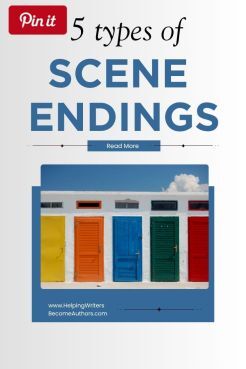 There’s nothing quite like a scene that ends with a bang—or at least a purposeful beat that pulls readers deeper into the story. A well-crafted scene ending doesn’t just wrap things up, it launches momentum into the next scene, tightens your pacing, and deepens the emotional arc. Your scene might close in any number of ways, everything from a victory to a setback or a plot twist to a moment of quiet revelation. Whatever the case, scene endings create the impression that will (hopefully) carry readers into what comes next. Really, your writer’s toolbox doesn’t contain many tools more powerful than scene endings, yet they can be easily overlooked when it comes to tightening tension or strengthening overall story structure.
There’s nothing quite like a scene that ends with a bang—or at least a purposeful beat that pulls readers deeper into the story. A well-crafted scene ending doesn’t just wrap things up, it launches momentum into the next scene, tightens your pacing, and deepens the emotional arc. Your scene might close in any number of ways, everything from a victory to a setback or a plot twist to a moment of quiet revelation. Whatever the case, scene endings create the impression that will (hopefully) carry readers into what comes next. Really, your writer’s toolbox doesn’t contain many tools more powerful than scene endings, yet they can be easily overlooked when it comes to tightening tension or strengthening overall story structure.
Classic scene structure breaks scenes into two broad halves: scene (action) and sequel (reaction). The scene half further breaks down into three primary pieces:
1. Goal (drives the action and intent of the scene as the character moves toward something).
2. Conflict (creates drama and complications by inserting obstacles that divert the smooth course of the character’s progression).
3. Outcome (shows the conclusion of the character’s efforts and reveals new complications leading to the next scene’s goal).
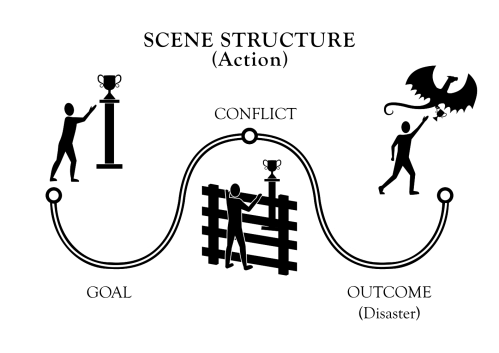
From the book Structuring Your Novel: Revised and Expanded 2nd Edition (Amazon affiliate link)
I have always emphasized the usefulness of two particular types of scene endings: the disaster (“no, and”) and the “yes, but” disaster. Today, I want to go deeper by breaking down five key types of scene endings—“Yes,” “Yes, But,” “No,” “No, And…,” and “No, But…”—and exploring how choosing the right one can keep your story flowing and your readers hooked.
In This Article:Why Ending Your Scenes Well Is Crucial for Pacing and TensionThe 5 Types of Scene Endings Writers Must Know (With Examples)“Yes” – Characters Get What They Want“No” – Characters Are Shut Down“Yes, But” — Small Victory With Complications“No, And…” – It Gets Worse, But There’s Hope“No, But…” – The Danger of False ProgressEnding Your Scenes With IntentionWhy Ending Your Scenes Well Is Crucial for Pacing and TensionFirst of all, let’s consider why we have scenes in our stories at all. Why not just one mad rush of action leading to the end? Although we could perhaps argue this a few different ways, the ultimate reason scenes are important in storytelling is the same reason any kind of structure is important: it creates and controls the pacing. And pacing, as I have shared before, is basically the writer’s version of the cool Jedi trick of mind control.
More than almost any other technique in fiction, pacing allows us to guide the audience’s experience. This is perhaps nowhere more true than of scene endings—which give audiences the opportunity to put the story down… or keep going. If you convince them to keep going, that means they’re enjoying themselves—and the more they’re enjoying themselves, the more likely they will stay all the way to the end.
Two Ways to Think About Scene EndingsThe outcome taking place at the end of the scene structure (discussed above).Any obvious break in the narrative—such as a chapter or commercial break or even just the subtle division of a scene break on the page.It’s important to notice that the two may be the same, but don’t have to be. A structural scene is defined by the pieces that make up its whole (scene and sequel, with all their smaller parts), while chapters and “scenes” (as dictated by visual scene breaks on the page) can be of whatever length is most useful to the pacing. A structural scene may expand across many chapters or a single chapter may contain multiple structural scenes.
>>Read more here: 7 Questions You Have About Scenes vs. Chapters
For our purposes today, we’re mostly focusing on the outcome of a structural scene. Why? Because these moments move beyond simple hooks or tricks used to tease audiences. Importantly, structural scene outcomes are always important turning points that advance the plot. The only way the plot is ever advanced is by something changing in the narrative—i.e., whatever scene goal the character just enacted cannot be enacted once again in exactly the same way. Something has changed. This could be simply that the character learned how to try again in a better way, or it could be that a major setback or achievement was reached that significantly altered the goal itself.
It’s also worthwhile to note that the idea of a scene “goal” does not necessarily insist that characters know exactly what they want and move toward it with single-minded focus. Sometimes the forward momentum implied by the idea of a “goal” is better recognized as simply an “intent” on the characters’ parts. They may be moving in a particular direction, but they may also (depending on the needs and tone of the story) simply be leaning in a certain direction.
Either way, what is most important is that this forward intent is met with some level of conflict. Here, too, it’s important to understand conflict in its broader sense. Conflict need not necessarily mean a confrontation or any hint of violence (i.e., something so slight as a disagreement on one end of the spectrum escalating into physical chaos on the other). Rather, conflict is best understood simply as something that impedes the scene’s forward momentum. Conflict is an obstacle creating the further complications or consequences that eventually change the character’s position within the narrative—thus changing the plot.

This change of situation is what then leads into the end of the scene—the outcome—which can show up as several different possibilities. Each possibility will impact your story’s pacing, flow, and function in different ways, which is why it’s important to understand all of them, the consequences they create, and which is best suited to any particular scene ending in your story.
The 5 Types of Scene Endings Writers Must Know (With Examples)So what are the best types of scene endings in fiction? Some endings slam the door shut. Others crack it open. Some fling it off its hinges and send your characters stumbling into the next chapter! What’s most important is that the scene’s outcome matters. It creates consequence, change, and momentum.
Let’s break down the five primary types of scene endings and explore how each one functions in your narrative (and why some are stronger choices than others).
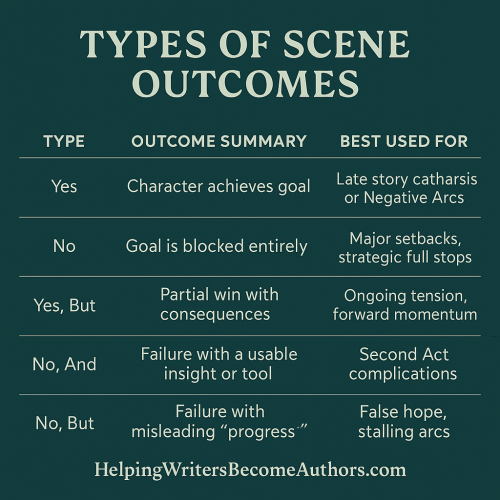
The five types of scene endings are “Yes,” “No,” “Yes, But,” “No, And,” and “No, But.”
1. “Yes” Scene Ending — Characters Get What They WantThis one’s straightforward: characters set out to achieve a goal in the scene, and they succeed. (Yay!) Sometimes “yes” endings can be deeply satisfying. However, they must be used with caution and awareness as they risk deflating tension. Usually, ultimate success is reserved only for the end of the story. This is for the simple reason that once the character has definitively succeeded (or failed) to reach the overall story goal, the plot is over. If your characters’ progress toward that ultimate goal is left unimpeded for too long, the plot will quickly run its course.
Of perhaps even greater concern is that “yes” scene endings don’t always generate new questions or consequences for the characters to explore in subsequent scenes. Usually, “yes” scene endings are most appropriate later in the plot when you’re wanting to show characters getting closer to achieving their final success. “Yes” scene endings can also be used for catharsis late in the story to relieve some of the tension you may have built—such as when romantic couples finally get together in a positive and love-affirming way (even if their struggles in the main plot haven’t yet been fully resolved).
Ironically, “yes” scene endings can be more appropriate in Negative Change Arc stories than in Positive Change Arc stories. This is because when a character is headed for a bad end, the successes achieved on the scene level ultimately lead to greater accumulated consequences down the line.
For Example:
In The Great Gatsby, when Gatsby finally reunites with Daisy at Nick’s house, he achieves his goal of finally meeting with her. The scene ends with Gatsby glowing in his long-awaited triumph. No real conflict derails the scene goal, and Gatsby doesn’t have to pay any immediate price. He gets exactly what he wants, and in that moment, it feels like success.

The Great Gatsby (2013), Warner Bros.
2. “No” Scene Ending — Characters Are Shut DownBy contrast, in a “no” ending, characters are stopped cold. The movement toward the goal isn’t just complicated, it’s outright blocked. No progress whatsoever is made. “No” scene endings can be effective for shooting the stakes sky-high. However, they should also be used with caution. Too many in a row means the plot can make no progress since characters never get any closer to the overall story goal. More than that, the absoluteness of “no” endings can make it difficult for characters to regroup or gather enough context to try again in a different way.
“No” endings often bring the narrative to a screeching halt. This is rarely a good plot device, since it actually kills tension instead of building it. In essence, if a “yes” ending deflates conflict by giving the protagonist a win, the “no” ending kills the conflict by instead giving the antagonistic force the win. There aren’t a lot of options for the protagonist after a solid “no” ending.
One of the only times a hard “no” ending might be desirable is when you do, in fact, want to screech the plot to a halt for a bit, as would be the case if you wanted to return to deeply traumatized or disillusioned characters after a passage of time in order to watch as they pick themselves back up.
For Example:
The Empire Strikes Back ends with a pivotal “no” when Luke Skywalker confronts Darth Vader in Cloud City. Luke’s goal is clear: defeat Vader and save his friends. Not only does he fail to defeat Vader, he loses his hand and is hit with the devastating reveal that Vader is his father. Physically, emotionally, and psychologically, he is stopped cold. The scene doesn’t just complicate things, it shuts the door completely. He escapes only by falling into the void. And after this moment, the plot does screech to a halt for a time between episodes, which allows the necessary space for Luke to reflect, regroup, and build into a new approach in Return of the Jedi.

Star Wars: The Empire Strikes Back (1980), 20th Century Fox.
3. “Yes, But” Scene Ending — Small Victory With ComplicationsOne of the most useful scene endings is the “yes, but” outcome. This one mixes elements of victory and defeat to deepen the narrative. On the one hand, the characters’ efforts achieve a “yes”—they get some or all of what they wanted in the scene. On the other hand, they are met with a “but”—their gain comes with complications or consequences.
This approach is particularly effective since it allows the plot to move steadily forward thanks to the characters’ achievement of scene goals on the path toward the larger story resolution. It also ensures the plot can’t end too quickly, thanks to the complications that prevent a clean victory. For instance, perhaps the characters get half of what they want, but that means they also don’t get half of what they want. Or perhaps they get exactly what they sought in this scene, but doing so raises the stakes or gets them into trouble, which can then prompt a new goal in the next scene.
From a pacing perspective, the “yes, but” scene ending is great since it gives the audience little hits of satisfaction as the characters receive yummy rewards, but it also ramps tension and keeps readers reading since these rewards complicate either the characters’ lives or their forward progress toward the ultimate catharsis of the Climactic Moment. In truth, this type of scene ending is so useful and versatile, you could easily use it for every scene outcome all the way to the end.
For Example:
The Fellowship of the Ring offers a great “yes, but” during the Council of Elrond when Frodo volunteers to take the Ring to Mordor. Although Frodo’s goal in that moment isn’t fully conscious, his intent is clear: he wants to do the right thing, stop the Council’s squabbling, and take responsibility for the burden he’s been given. He succeeds when the Council accepts his offer in a definitive “yes.” The complications, however, are enormous as this decision definitively turns the plot by launching Frodo onto a long, dangerous road filled with escalating threats.
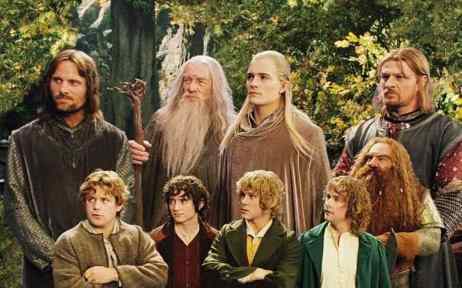
The Lord of the Rings: The Fellowship of the Ring (2001), New Line Cinema.
4. “No, And…” Scene Ending — It Gets Worse, But There’s HopeWhat’s the difference between a “yes, but” and a “no, and” scene ending? The “no, and” scene ending is similar to the “yes, but” ending, but flips the script. Here, instead of mostly succeeding, characters mostly fail. However, the failure is not complete. Out of the rubble of failure, scraps of insight or hope emerge. Some small bit of ground is gained.
The “no, and” scene ending is the classic “cup half full.” Everything’s gone to pot, yet characters are still able to salvage some small win. They find a way forward through the mess or latch onto the bit of knowledge learned from their mistakes. Whatever the case, the most important thing to leverage about a “no, and” ending is that it moves the plot. The only way it can do that is by changing something for the characters. Even though they may have spectacularly failed to gain what they wanted, they now have some tool or clue that allows them to try again but in a different way.
“No, and” endings can’t be used as exclusively as “yes, but” endings (unless your story leads to your characters’ ultimate failure), but they can be used liberally, especially in the Second Act, to increase tension, raise the stakes, and create interesting dynamics for prompting characters to evolve.
For Example:
The Martian by Andy Weir features a great “no, and” scene ending when protagonist Mark Watney tries to make water to grow his crops and accidentally blows himself up. His goal was simple: create a livable environment using chemistry and ingenuity. The scene ends in failure. However, in the aftermath, he figures out what went wrong, recalibrates his approach, and gains critical information about how to proceed more safely next time.

The Martian (2015), 20th Century Fox.
5. “No, But…” Scene Ending — The Danger of False ProgressThis is the trickiest one. In a “no, but” ending, characters fail to get what they want, but walk away with something that seems helpful—until it turns out it’s not. “No, but” scene endings creates the illusion of movement without true momentum. As a plot device, this is never particularly useful since it never actually moves the plot, no matter how much it may look like it does. It creates dead ends in which characters spend time working on a seeming solution—only to end up exactly where they started back before the original “no, but” scene. The result can be a “busy” plot that actually goes nowhere.
The “no, but” outcome may be used very occasionally with purposeful effect to emphasize a character’s current refusal to learn and/or to face consequences or personal blind spots. It can also be used to deepen tension and despair in certain situations, in which a character is clinging to false hope—such as in disaster stories in which characters think they have found a way out of their peril only to realize it was a mirage. Used sparingly, this kind of scene can underscore a character’s stuckness or false sense of growth.
For Example:
Indiana Jones and the Last Crusade features a solid “no, but” scene early on when Indy fails to recover the Cross of Coronado from the treasure hunter who stole it. He’s given a token “win” when the local authorities thank him and the museum director tells him, “At least you tried.” However, although it may feel like he’s accomplished something or at least clarified his purpose, the artifact is still gone. He’s no closer to recovering it than he was before. This isn’t progress. The “but” gives the illusion of development, but the narrative is effectively paused until the real plot kicks in with the Grail storyline.
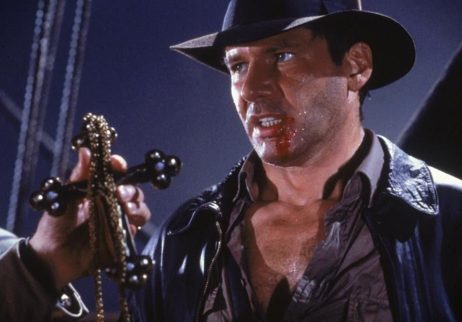
Indiana Jones and the Last Crusade (1989), Paramount Pictures.
Ending Your Scenes With IntentionAs with most writing techniques, the power of scene endings lies not simply in recognizing the options, but in knowing how and when to use them. The way you close a scene determines how your story moves forward. This is true whether you’re building tension, paying off a moment of catharsis, or giving your characters one more reason to grit their teeth and keep going. If your scene endings feel flat, confusing, or disconnected, chances are your plot is suffering too. However, when you choose your outcomes with intention by aligning them with character goals, story structure, and pacing, you can create a reading experience that feels cohesive and alive with momentum.
In SummaryScene endings are structural turning points that determine your story’s pacing, tension, and sense of movement. Choosing the right type of outcome, whether it’s a clean win, a total failure, or something sneakier in between, can keep your plot evolving and your readers fully engaged.
Key TakeawaysEvery structural scene ends with an outcome that determines the story’s forward momentum.The five main types of scene endings are: “Yes,” “No,” “Yes, But,” “No, And,” and “No, But.”“Yes” scene endings create character success but can flatten tension if overused.“No” scene endings end in total failure and must be used sparingly to avoid stalling the plot.“Yes, But” scene endings are the most versatile, combining satisfaction with escalating tension.“No, And” scene endings emphasize failure but give characters new tools or insight to try again.“No, But” scene endings create only the illusion of progress and should be used sparingly to avoid plot dead ends.Want More?
Structuring Your Novel: Revised and Expanded 2nd Edition (Amazon affiliate link)
If you’re ready to take a deep dive into the mechanics of scene structure, including how to seamlessly integrate your scene and sequel halves, check out my book Structuring Your Novel. Not only will it teach you how to structure a solid plot, it’s packed with practical tools and intuitive frameworks to help you build scenes that keep readers reading. It’s available in e-book, paperback, and audiobook.
Wordplayers, tell me your opinions! Which of these five scene endings do you find yourself using most often? Are there any you tend to avoid? Tell me in the comments!Click the “Play” button to Listen to Audio Version (or subscribe to the Helping Writers Become Authors podcast in Apple Podcast, Amazon Music, or Spotify).
___
Love Helping Writers Become Authors? You can now become a patron. (Huge thanks to those of you who are already part of my Patreon family!)The post The 5 Types of Scene Endings Every Writer Must Master appeared first on Helping Writers Become Authors.
July 28, 2025
7 Ways to Watch and Read More Intentionally
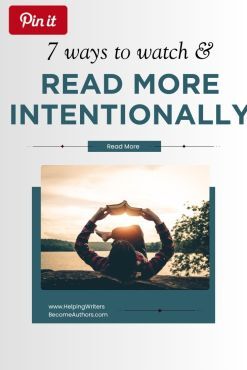 In a world flooded with stories—books, shows, films, and endless social content—it’s easy to fall into passive consumption. But as writers and creatives, what we take in matters just as much as what we put out. To write with depth, clarity, and resonance, we must first learn to read more intentionally and watch with greater awareness. Intentional consumption isn’t about being rigid or “highbrow.” Rather, it’s about choosing stories that challenge us, feed us, and reflect the kind of storytelling we want, in turn, to create.
In a world flooded with stories—books, shows, films, and endless social content—it’s easy to fall into passive consumption. But as writers and creatives, what we take in matters just as much as what we put out. To write with depth, clarity, and resonance, we must first learn to read more intentionally and watch with greater awareness. Intentional consumption isn’t about being rigid or “highbrow.” Rather, it’s about choosing stories that challenge us, feed us, and reflect the kind of storytelling we want, in turn, to create.
Earlier this month, I offered a post about “Why Intentional Storytelling Matters in an Era of AI and Algorithm-Driven Content.” It was an exploration of all the reasons intentional storytelling has always mattered and perhaps matters more than ever in our modern era of ultra-speed and convenient shortcuts. The first comment on that post (amongst many in a wonderfully rich discussion) was from Heather J. Bennett who wrote:
It’s also a problem with lazy readers who aren’t taking the time to slow down and read the story as it’s written. … Their attention spans for reading for the nuance of the storytelling is shorter with understandable life priorities and needing to get things done.
This immediately spoke to something I was already thinking about, which is that intentional consumption—reading and watching—is just as important, if not more so, than intentional creation. However, this isn’t to separate writers from consumers or suggest “others” should bear the blame for “bad” stories being all too acceptable to the market. After all, we as writers are first and foremost members of that same audience. To the degree we seek to create intentional art—art that that is “on purpose” and for a reason—then this is a reminder that our reading/watching choices not only inform the general market, but also the quality of what we’re inputting into our own experiences and how that that affects the output in our writing.
In This Article:How Does What You Read and Watch Shape Your Writing?How Reading and Watching Low-Quality Content Affects Your WritingDo Stories With Agendas Harm Good Storytelling?What Does It Mean to Read More Intentionally as a Writer? (7 Tips)How Does What You Read and Watch Shape Your Writing?Which is more important: writing intentionally or reading intentionally?
It’s kind of a chicken-and-egg question, but ultimately I believe intentional media consumption is more important. Why? Because the personalized landscape of our individual media consumption is the fertile ground out of which grows everything we might hope to create. Someone who chooses media with the utmost intention is unlikely to then create without intention. Even if they did, I have to believe the careful attention to input would still favorably impact the output.
In short, we are what we read (and watch).
No doubt, you’re familiar with the suggestion that you are the average of the five people you’re around the most. Your media consumption impacts you just as greatly. It’s worth examining five of the shows you watch most often and five of the series you most like to read (or perhaps for simplicity’s sake, the type of shows and books you most enjoy) and considering how they have “made” you—for better or worse.
You can also think of it like this: your writing is unlikely to rise above the average quality or thematic messaging of what you read and watch. More crucially, consuming low-quality media risks the dulling of yourself. And if nothing else, even if the effect is neutral, you must contend with the fact that in not asking more of your media, and therefore of yourself, you are missing potential opportunities to raise yourself.
How Reading and Watching Low-Quality Content Affects Your WritingIntentional media consumption affects everyone, but as writers, our interaction with media has the potential to create a greater ripple effect. Not only do our media choices affect us personally (which, of course, necessarily affects our writing), they also directly shape our own works of fiction.
The single greatest rule of thumb when it comes to questioning whether you’re reading and watching critically is to consider whether or not you are reading or watching with your soul.
Fundamentally, what I mean by this is that engagement should bring a certain spark of aliveness. What you read or watch should make you feel alive.
Media is nourishment for our minds and souls. Just as with the physical nourishment of food, we have to consider whether we’re getting enough quality nutrients. Are we consuming junk content or “real” content? Just as with junk food, it’s true enough we all tend toward a soft spot for junk entertainment.
What is junk entertainment?
Empty calories that are satisfying-but-not-satisfying.Adds nothing of real value.Possibly leaches valuable nutrients (i.e., time, happiness, contentment, positivity).Strangely but inarguably addictive.This isn’t to say the occasional cheat day isn’t a worthy part of our lives, but a steady diet of anything that isn’t actively adding value is, at best, a waste and, at worst, actively harmful to both ourselves, our potential readers, and inevitably the collective.
Do Stories With Agendas Harm Good Storytelling?We tend to blame much of our current dissatisfaction with modern media on the fact that storytelling has become ever more polarizing and political. It is not uncommon for the release of even the most popcorn-y of all entertainment—the summer blockbuster—to be bulldozed by political rants of all persuasions. It can be difficult to engage with modern media without guarding against intrusive messaging (and that may even be before we know what the messaging may be).
Many people cry out that stories should not be vehicles for political and social agendas and should get back to being “just for fun” or “just entertainment.” (But maybe you already know what I think about the “just” word in front of stories…)
I do not believe this is the problem. Stories have always been political. By their very nature as an inherently transformational experience, they can’t be anything else. (Never mind that the simple act of reporting on the human condition is also inherently—and often dangerously—political.)
Neither is the problem that “real” stories and “important” stories shouldn’t be fun. Indeed, I can’t help but think that the most wildly entertaining genre stories are those with the most potential for impacting humanity—not only through their sheer accessibility but also through their natural tendency toward the simple depth of the archetypal experience.
No, in my opinion, what we are ultimately reacting against—and, out of sheer exhaustion, increasingly putting up with—are specific trends that have taken us away from the true heart—the true soul—of what story really is.
Problematic storytelling devices we should be conscious of when consuming (and should not excuse) include:
Plot-driven stories that neglect character arcs (i.e., characters made to serve plots rather than plots made to serve characters).Entertainment-first storytelling vs. artistic integrity (i.e., seeking stories that will supposedly sell vs. writing stories of originality and personal intensity).Flat stereotypes vs. rich archetypes (i.e., writing tropes and plot formulae vs. meeting, understanding, and mining the deeper archetypal wisdom of story transformation).Storytelling instead of story channelling (i.e., creating stories primarily or entirely from our left brain’s logic vs. listening to what wants to come through the right brain).What Does It Mean to Read More Intentionally as a Writer? (7 Tips)In many ways, I think reading and watching critically is actually more difficult than mindful storytelling. Partly, this is because we often feel we have less control over what media is placed before us to consume versus what we can consciously choose to create. Mostly, however, it is because consumption is a relatively passive action—we simply sit and accept what we are given, even if we don’t necessarily like it—whilst creation necessarily demands our entire active participation and therefore choice.
As such, and because watching and reading as a writer is such an intrinsic part of the larger storytelling process, upping the ante on media literacy for writers becomes a deeply important topic. To that end, here are several suggestions for nourishing your creative mind, all of them straight from my own practices in intentional media consumption.
1. Stop Consuming Content That Doesn’t Spark CuriositySo, yes, the first step is to just: stop watching and reading.
If there’s no spark, turn it off. Don’t consume mindlessly just because it’s there. Just say no.
Although I have always had the habit of watching a hour or two of TV or movies in the evenings, recently I decided to take an indefinite break, for the simple reason that I was spending upward of two hours every day watching stuff that, for the most part, I didn’t even like. Part of this reaction is due to my own moods and tastes at the moment, but part of it is the very real scroll of doom on Netflix and other streaming services.
By stepping away from habitual viewing, not only can I spare myself from increasingly unintentional media choices, I can also devote those two hours to more productive pursuits—like reading a (good) book or working on my own writing. If a movie or show comes along that I’m actually excited about (Stranger Things 5, looking at you!), I’ll watch it.
Until then, impress me. I’ll wait.
2. Make Space for SilenceI have always felt (with no small amount of satisfaction) that watching movies and reading books was just part of my job. But amidst the ever-increasing cacophony that is my (almost) 40-year-old brain in the year of 2025, the need to step back and hear myself has become perhaps an even more important part of that job. As writers, we are (and, I think, should be) influenced by the media collective. But our stories ultimately come from us, and the only way to truly find them is to make sure we can hear our own inner whisperings louder than whatever junk-food TV might be playing in the background.
3. Practice Reflective Watching and ReadingWhen you do read or watch, take the time to think critically about what you consume.
For a writer, this may begin by critically analyzing technique.
As a 21st-century human, this demands noticing where we might be copping to habitual and ingrained responses (either for or against).
Perhaps most important, it should mean noticing how you feel.
Questions to ask about intentional reading and watching:
How are the feelings that are coming up (whether big or small, for or against, happy or angry) a mirror for you?What do you think the author wanted you to experience>How did your actual experience line up with this?These are first and foremost soulwork questions, but inevitably also questions about honing writing technique.
4. Challenge Yourself With Unfamiliar StoriesReading with intention often means going off the beaten track. Instead of simply choosing the latest show available on streaming or the newest bestseller in your favorite genre, take your autonomy in your hands and make the commitment to be bold. Read things that are edgy.
Edgy stories are those that push you because:
They require skillful comprehension,They ask you to step beyond what it is triggering, confronting, or uncomfortable.They beckon from outside your current comfort zone or personal interests.They represent something strange, frightening, or “other.”They scare you (just a little bit).5. Revisit Books and Films That Moved YouReturn to some of your old favorites—those that spoke to your mind, heart, and soul. Sometimes I have to go back to the books and movies that made me want to be a writer in the first place—just to see if the old magic is still there. And it is. And it always gives me hope, because it means story is still there. It’s still alive—on the page, on the screen, and in me. Story is just as vibrant and moving and exciting as it ever was, as long as we’re looking in the right places.
6. Create Intentional Reading ChallengesA good reading (or watching ) challenge is always a good way to mix things up, to make sure your choices are intentional, and to explore story terrain you may otherwise have missed entirely.
Three of my ongoing challenges are:
Reading the classics (which I define as any famous book written prior to 1980).Reading the Pulitzer winners for fiction.Watching all the movies in my collection in reverse order starting in the 1930s.Here are a few ideas for reading or watching challenges:
An author who challenges you.A genre you’ve never read.A book you know sits across from your current ideological fence rail.A movie from each decade.A foreign film.Something you used to love and something you used to hate—just to see if anything has changed.The point is to detour from comfortable ruts and to rouse curiosity for the unknown. You never know what you’ll find—probably your next story idea!
7. Read for True Fun, Not Passive DistractionFinally, it’s worth saying that intentional media consumption is not about forcing yourself to become a highbrow literary elitist (unless you want to be). Rather, I believe the single greatest sign we’re on track with our reading and watching is that we are having fun.
Not mindless semi-satisfaction.
But true heart-pounding, gut-clenching, laughing-out-loud, squealing-in-the-theater, delighted, ignited, enlivened fun.
Yes, story is indeed entertainment, but it is never just entertainment. It is engagement. True fun is never mindless because it shows us the core of our own passions and truths.
So perhaps the best rule of all for reading and watching with intention is to ask: “Am I having fun?” And if you’re not: don’t.
***
If stories are nourishment, then writers are the cooks who must taste every ingredient before serving it up. What we take in becomes the flavor of what we offer the world. Choosing to read more intentionally is more than a personal practice—it’s a creative responsibility. When we consume with care, curiosity, and courage, we elevate our own craft and influence the stories being told around us. The world doesn’t need more noise. It needs storytellers who are listening first.
If writers don’t read/watch with intention, who will?
In Summary:Intentional media consumption isn’t just about watching “better” shows or reading “smarter” books. It’s about aligning your media choices with your creative purpose. When you engage with stories that challenge, inspire, or even unsettle you, you’re nurturing the very soil from which your own stories grow.
Key Takeaways:You are what you consume. Your media habits shape your inner creative landscape.Junk content dulls creative potential. Just like food, low-quality stories leave you hungry for meaning.Reflective consumption enhances storytelling. Asking why something moved you (or didn’t) sharpens your writing instincts.Challenging content helps you grow. Step beyond your comfort zone to discover new perspectives and storytelling techniques.Fun is a compass. True fun—joyful, engaged, soul-stirring fun—is the best indicator of intentional story alignment.Want More?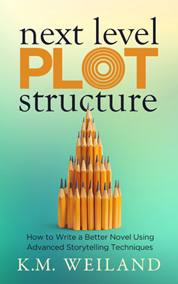
Next Level Plot Structure (Amazon affiliate link)
If you’re feeling inspired to not just consume stories more intentionally but to write them more intentionally too, check out my most recent book Next Level Plot Structure. This one’s for writers who are ready to move beyond just hitting plot points to really exploring the deeper architecture of story—including plot structure’s mirror-like symmetry, the four symbolic “worlds” found within every story, the pacing beneath the beats, and the powerful emotional logic that makes a plot resonate. It builds on what I taught in Structuring Your Novel, but goes further into the soul of structure itself. If you’ve ever sensed there’s something deeper going on in great stories—even if you couldn’t quite put your finger on it—this book will help you tap into that, shape it, and use it with purpose. It’s available in paperback, e-book, and audiobook.
Wordplayers, tell me your opinions! Do you think writers have a responsibility to read more intentionally—and if so, what’s one story that changed the way you think about your own writing? Tell me in the comments!Click the “Play” button to Listen to Audio Version (or subscribe to the Helping Writers Become Authors podcast in Apple Podcast, Amazon Music, or Spotify).
___
Love Helping Writers Become Authors? You can now become a patron. (Huge thanks to those of you who are already part of my Patreon family!)The post 7 Ways to Watch and Read More Intentionally appeared first on Helping Writers Become Authors.
July 21, 2025
What Makes a Story “Bad”? A Guide to Why Your Narrative Isn’t Working
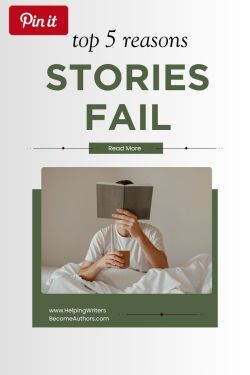 We’ve all experienced it: a story that looks good on paper, features big-name characters, or starts with an intriguing premise—but somehow falls flat. Maybe the characters feel hollow, the plot drifts without purpose, or the ending lands with a thud. But what actually makes a story “bad”? Are there pitfalls you can look out for that can save your story? More importantly, how can you avoid these mistakes when writing or editing?
We’ve all experienced it: a story that looks good on paper, features big-name characters, or starts with an intriguing premise—but somehow falls flat. Maybe the characters feel hollow, the plot drifts without purpose, or the ending lands with a thud. But what actually makes a story “bad”? Are there pitfalls you can look out for that can save your story? More importantly, how can you avoid these mistakes when writing or editing?
Bad storytelling is one of those things where you “know it when you see it.” Or, rather, you feel it. Sometimes when you read or watch something that isn’t working, it can be hard to put a finger on what’s gone wrong. And yet your gut knows. Your visceral reaction to the story may range from a mild sense of dissonance, confusion, or even boredom all the way up to outright irritation or even anger.
The good news is that, as writers, the moments when you start feeling the ick are the best teaching moments possible. They give you the opportunity to look deeper into your own experience and examine why the story prompts this reaction. Although the reasons can span the gamut and are often quite subjective and personal, today I want to look at five of the most common mistakes that can create an objectively bad story. I’ve included examples of stories in which the topic in question was well-executed as well as stories in which mistakes turned what might otherwise have been good stories into bad stories.
In this Article:Characters Who Don’t Accurately Reflect HumanityCharacters Who Don’t Adapt/Learn/ChangePlots That Are Constructed Around Actions Rather Than MotivesPlots That Don’t Ultimately Mean AnythingThemes That Are “On the Nose”What Makes a Bad Story? The Top 5 Reasons Stories Fail1. Characters Who Don’t Accurately Reflect HumanityIt’s not who you are underneath. It’s what you do that defines you.
When it comes to characters, truer words were never spoken than these from Batman Begins. This also goes back to that all-important adage, “Show, don’t tell.” Basically: audiences will always judge your characters based on their actions before they look to any other cues. Even if you’ve created a character who is archetypally coded as a good person, that isn’t enough by itself to prevent audiences from judging and disliking this character if the character is acting out not-so-good behavior.
Worse, if you suggest to audiences that a character is good, only to have that character’s actions fail to accurately reflect how such goodness plays out in real life, the character will likely seem hypocritical or worse. In real life, this is how we interpret such inconsistent behavior from other people. Why should we expect audiences to see our characters any differently?
But make no mistake, this is tricky, since authors too often fail to see their characters with the same objectivity as readers will. Not only do we tend to see characters how we intend to portray them, we also tend toward blindness where our skills aren’t pulling it off.
Bad Example: In the BBC series Land Girls, the character Joyce is presented as brave, plucky, humble, and hard-working. She courageously volunteers as a Land Girl to serve her country during World War II, soldiering on in the face of her fear for her beloved husband, who is a rear gunner in the RAF. The problem (amongst many in this beleaguered series) is that Joyce was written to consistently perform actions that showed her to be selfish and controlling—not least in abandoning her wounded husband for mistakes he made when he had amnesia in France.
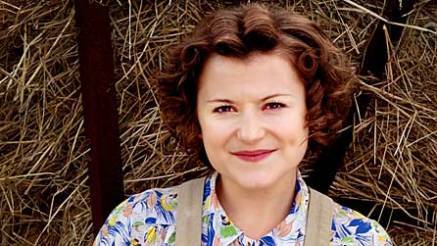
Land Girls (2009-11), BBC One.
Good Example: The secret to remedying this problem is to write dimensional characters. Of course, no character is good all the time. In fact, such characters tend to be boring. But writing a character with layers and complexities is different from inconsistently presenting virtues and vices. Any truly good story does this one well, but a recent example that comes to mind is Wicked, which creates a complex dynamic between frenemies Elphaba and Galinda. Both characters present internal ironies: Elphaba is not as bad as she lets others think, and Galinda is not as good as she lets others think. Instead of glossing over these complexities, the story explores them honestly, not least in authentically representing the consequences of both characters’ decisions. The most obvious example is that Elphaba must eventually take on the role of the renegade everyone has always thought her, not least because it is difficult for others to believe the truth beyond the roles she has always played.
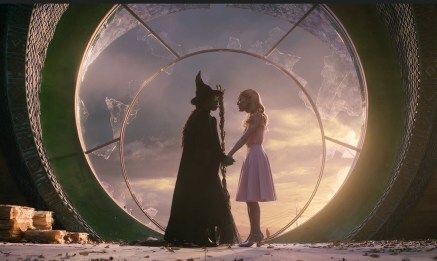
Wicked (2004), Universal Pictures
2. Characters Who Don’t Adapt/Learn/Change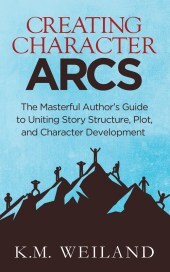
Creating Character Arcs (Amazon affiliate link)
When characters don’t learn from their mistakes, and instead keep doing the same foolish nonsense over and over throughout the story, the intention on the author’s part is usually to milk a certain trope for all it’s worth. Comedy is an obvious example—and when the character in question is a supporting character this can sometimes work. However, although audiences will willingly accept vast shortcomings from a character, they will not long suffer a fool who refuses to learn and grow from the consequences of personal actions.
Stories are change. If everything is the same at the end as it was at the beginning, you don’t have a story. Even in Flat Arc stories, in which the protagonist does not change, the story world does change. Stories are ultimately studies in evolution—whether deeply personal and moral or just practical. If characters fail to grow over the course of the story, this not only lends itself to repetitive action, it also fails to accurately portray an intriguing individual who is worth following around for the entirety of a movie or book.
Bad Example: Let’s go back to some millennial rom-coms here. The Wedding Planner showcases the major problems of the genre in that the characters learn little to nothing from the conflict. In particular, Jennifer Lopez’s female lead shows as little grasp of self-worth at the end of the story as she did at the beginning. She changes her mind about potential love interest Matthew McConaughey, even though he has done nothing to erase the fact that he is a proven cheater—having compromised his relationship with his fiancée (who is not Lopez) repeatedly over the course of the story.
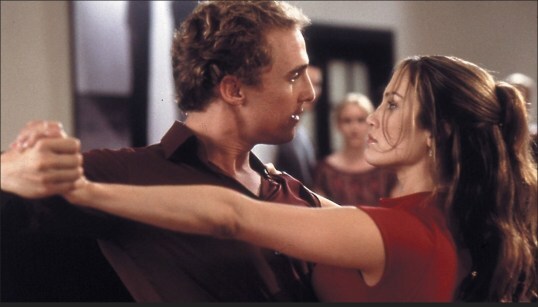
The Wedding Planner (2001), Sony Pictures.
Good Example: Both lead characters in the classic You’ve Got Mail learn from their mistakes and limiting perspectives (their Lies) over the course of the story. Both behave abominably at times, but their coming together in a relationship at the end of the story feels satisfying rather than frustrating because both have also proven their capacity to change. (Indeed, perhaps the most beloved romance of all time, Pride & Prejudice, follows a similar pattern and works precisely because the main characters change so dramatically in the end—particularly with Darcy’s benevolent rescue of Lizzie’s disgraced sister.)
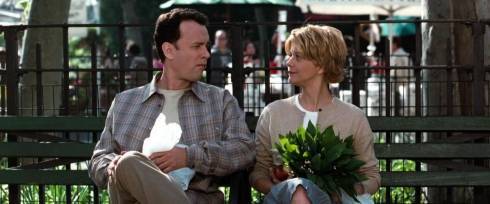
You’ve Got Mail (1998), Warner Bros.
3. Plots That Are Constructed Around Actions Rather Than MotivesMost of the problems in this list come down to the central issue of characters that exist to serve the plot, rather than plots generated by the characters. The simplest way to check your story is to ask whether you’re inventing actions for your characters and then tacking on the motives afterward—or whether you are allowing actions to arise naturally out of deep motivations. We see this often in stories of all genres, but perhaps nowhere more obviously than in action-oriented stories, in which scene dynamics are constructed to take advantage of, exemplify, and hammer home certain character traits.
This is done to create what is intended to be the pleasurable experience of watching characters act out certain dynamics. Ironically, the result often fails for the basic reason that the character’s actions, however interesting in themselves, are not arising from or creating causal or consequential growth.
Bad Example: The recent BBC adaptation of Winston Graham’s historical drama Poldark diverged from its source material in its fifth and final season. The result was a noticeable shift in the quality of writing for the very reason that the writing became more about making the characters do things for the sake of the plot, rather than allowing the plot to rise realistically from the characters’ actions (something the series had done very well up until this point). The final season harps endlessly on the protagonist Ross Poldark’s “recklessness,” plunging him into increasingly foolish and absurd situations—no doubt in the belief that the audience has always enjoyed this personality trait. The difference in this season is that the character’s motivations are retrofitted onto his recklessness, rather than the recklessness arising as a natural personality response to his deeper motives.
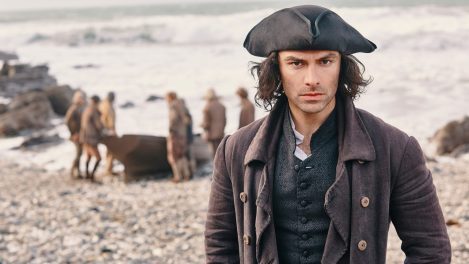
Poldark (2015-19), BBC One.
Good Example: Although there are a few moments in the series that push this line, Yellowstone‘s presentation of Beth Dutton generally offers a strong example of a larger-than-life character who creates dynamic and interesting plot events that arise naturally from her own personality and motivation. There is rarely a sense that Beth is being forced to behave in certain ways just to create these plot events or to allow for potentially shocking or intriguing scenes. Rather, the force of Beth’s own passionate character creates the plot events as she goes. She is a particularly obvious example, since her personality is so aggressive and over-the-top, but she shows how writers can get the best plots simply by asking, “What would this character do in this situation?” instead of “How can I get this character to realistically do this thing?”

Yellowstone (2018-2024), Paramount Network.
4. Plots That Don’t Ultimately Mean Anything
Next Level Plot Structure (Amazon affiliate link)
Stories have to mean something. Otherwise, why bother? Life is about meaning. The act of living is about finding that meaning, and stories are meant to reflect that. If they don’t offer meaning—a point—then not only do they almost always fail to entertain, they also miss out on a much greater potential.
How do you inject meaning into a story? It doesn’t have to be anything grand or sweeping or even deep. It just has to offer an ending in cohesion with the story that preceded it.
The meaning of a story is always found in the ending. The ending proves what the story was about. This means that, no matter how great the first 90% of your story, if the ending doesn’t offer a suitable commentary on everything that has come before, the plot won’t ultimately mean anything. Every scene in a story’s plot must drive the story’s conflict toward an endpoint that is cohesive and appropriately tense with all that came before.
Bad Example: I’m going to pick on the final season of Poldark one more time. It’s worth noting that, in the books, this season is not the end of the characters’ stories. However, for the purposes of this adaptation, the fifth season is the end and therefore the only opportunity for audiences to pull a final sense of meaning from the saga. Unfortunately, the comparatively poor writing in this finale not only weakened the overall characterization, particularly of Ross, but also failed to hone in on what had always been the throughline and point of the story: the conflict between Ross and his nemesis George Warleggan, [SPOILER] who is here relegated to the background with a bizarre portrayal of delusional madness in the aftermath of his wife’s death [/SPOILER].
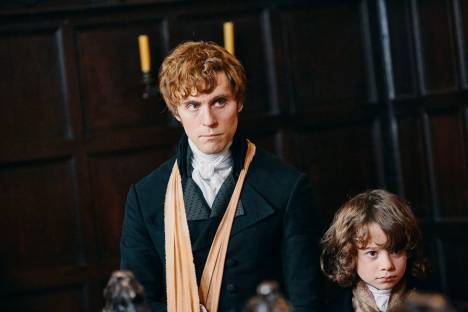
Poldark (2015-19), BBC One.
Good Example: The contrived “ending” of Poldark‘s Season 5 aside, the overall presentation of the story in the previous four seasons were exemplary—not least because the plot naturally returned again and again to core themes: Ross’s tempestuous relationship with his wife Demelza, his obsessive feud with George Warleggan, and his passionate championing of his mine workers’ rights. Every ending of every season leading up to the final one felt satisfying exactly because the tightly focused plots allowed for outcomes that not only felt cohesive but that carried the weight of a deeper resonance.
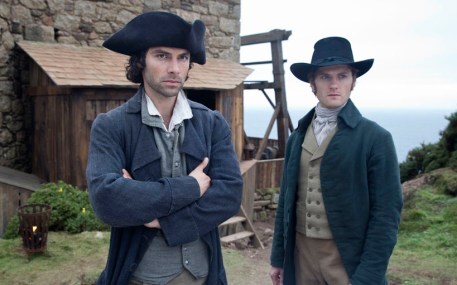
Poldark (2015-19), BBC One.
5. Themes That Are On the Nose
Writing Your Story’s Theme (Amazon affiliate link)
Good themes arise naturally from plots that are driven by strong characters. Although you can study theme (and in my opinion should—check out my book Writing Your Story’s Theme), you really don’t have to for the simple reason that if your plot and character are working well, so is your theme. In short, if you avoid all of the previous pitfalls, you’re probably already writing a story with innately chewy themes. On the flipside, however, is the problem of writing themes that feel too obvious or on the nose.
These are usually stories in which the theme is either explicitly harped upon (as a sort of “moral of the story”) or stories in which the thematic metaphor is blatant (i.e., the story’s external conflict is too obviously contrived as a mirror of the theme). There’s nothing wrong with an explicit thematic metaphor (such as the communism of Animal Farm or the underworld of grief in What Dreams May Come). But a good rule of thumb is that the more explicit the thematic metaphor, the more emotional complexity the story requires in portraying its moral quandaries.
Bad Example: Thunderbolts* was a much better film than much of what Marvel has been putting out in the last six years. Unfortunately, it suffered from a lack of thematic depth for the very reason that it leaned all of its thematic weight into the explicit metaphor of mental health and depression. [SPOILER]The bad guy is literally depression—a sentient and all-consuming void that has become disassociated from its human originator.[/SPOILER] On the surface, this is an excellent thematic metaphor, especially since it ties into the protagonist Yelena Romanov’s own existential struggles. And yet the film felt decidedly shallow in the face of such a tremendous thematic exploration, simply because its plot and character dynamics did not catalyze the theme. The characters and their involvement with this antagonist were largely incidental, thematically pertinent only tangentially through their personal histories with PTSD and guilt.

Thunderbolts* (2025), Marvel Studios.
Good Example: A much better example of cohesive themes is another Marvel entry, The Winter Soldier. Although structurally much the same as Thunderbolts*, this film is able to deepen itself beyond simple action-genre tropes into an earnest exploration of the complex intersection between moral values and relational loyalty. The reason its themes feel far more organic, and as a result more thought-provoking, is because those themes arise naturally from the protagonist, Steve Rogers, and his interactions with every other character, particularly his long-lost best friend Bucky Barnes, aka the Winter Soldier. One notable difference between these two films is that every character in Winter Soldier plays an important thematic role in interacting with the protagonist and prompting his own journey. In contrast, characters in Thunderbolts*, including the nominal protagonist Yelena, are little more than spectators to the main action, which is driven by the seeming bystander “Bob.” They could easily be changed out for an entirely different team of heroes, whereas Steve Rogers is specifically inherent to the plot and theme in Winter Soldier.
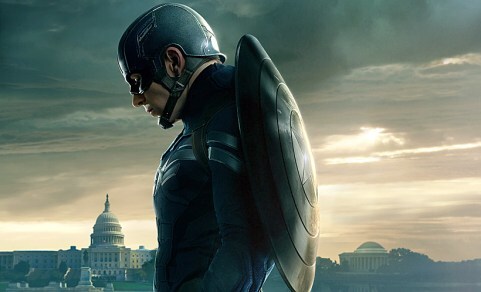
Captain America: The Winter Soldier (2014), Marvel Studios.
***
In the end, bad storytelling is usually the result of misalignment between character and action, plot and meaning, theme and execution. The most common narrative failures happen when writers try to force stories rather than uncover them. The silver lining is this: if you can recognize what doesn’t work in other stories (and your own), you’re already halfway to crafting something better. Great storytelling is simply honest storytelling driven by real characters, deep motivations, and resonant consequences.
Wordplayers, tell me your opinions! What’s a story you wanted to love—but just couldn’t? What made it fall apart for you? Tell me in the comments!In Summary:Stories that fall flat often share the same core problems: characters that lack dimensionality or growth, plots that prioritize spectacle over motivation, and themes that are either nonexistent or overly literal. Understanding these pitfalls can help writers tell stories that are more emotionally honest, structurally coherent, and ultimately more impactful.
Key Takeaways:Characters must reflect human complexity. Viewers judge characters by their actions, not the author’s intentions.Change is the heartbeat of story. If characters (or the world) don’t evolve, the story stalls.Plot must arise from character motivation. Don’t reverse-engineer actions just to create drama.Your ending is your meaning. A satisfying conclusion echoes and elevates everything before it.Themes work best when organic. On-the-nose metaphors often feel shallow without strong emotional grounding.Want More?If you’re ready to dive deeper into what makes characters truly work—and how to build meaningful arcs that drive everything from plot to theme—check out my book Creating Character Arcs. It breaks down exactly how to construct transformative journeys that resonate with readers and anchor your entire story—both plot and theme. You can find it here in my store or anywhere books are sold. It’s available as an e-book, paperback, and audiobook.
Click the “Play” button to Listen to Audio Version (or subscribe to the Helping Writers Become Authors podcast in Apple Podcast, Amazon Music, or Spotify).
___
Love Helping Writers Become Authors? You can now become a patron. (Huge thanks to those of you who are already part of my Patreon family!)The post What Makes a Story “Bad”? A Guide to Why Your Narrative Isn’t Working appeared first on Helping Writers Become Authors.
July 7, 2025
Why Intentional Storytelling Matters in an Era of AI and Algorithm-Driven Content
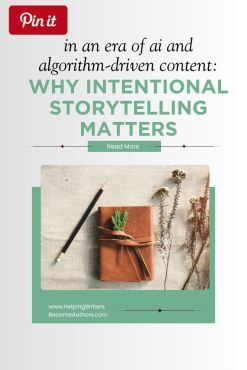 These days, it’s easier than ever to write stories that look like stories. I’m talking about stories follow beat sheets, mimic bestselling formulas, and say all the “right” things. But more and more, I see authors tempted to make creative choices based on convenience rather than imagination or integrity. When that happens, we have to ask: are we saying anything real?
These days, it’s easier than ever to write stories that look like stories. I’m talking about stories follow beat sheets, mimic bestselling formulas, and say all the “right” things. But more and more, I see authors tempted to make creative choices based on convenience rather than imagination or integrity. When that happens, we have to ask: are we saying anything real?
Intentional storytelling—the kind that grows from a writer’s unique vision and voice—is at risk of being quietly drowned out by franchise formulas, AI-generated content, and the pressure to produce faster than ever. If you’ve ever felt like you’re just going through the motions instead of creating something that truly matters, you’re not alone. Let’s explore what’s being lost, and what we can reclaim.
In This Article:What Intentional Storytelling Is Not: Avoiding Formula and Empty ContentHow Modern Media Incentivizes Unintentional ChoicesWhy “Just Following the Formula” Falls ShortTools vs. Crutches: Knowing the DifferenceWhat Is Intentional Storytelling? Defining Purposeful, Authentic Narrative CraftWhat Makes Details Matter: Cohesion and ResonanceHow Subtext Reflects the Integrity of a StoryWhat AI Can’t Do for You (Unless You Know Yourself First)Why Intentional Storytelling Matters More Than Ever in an AI-Driven Content WorldHow the Creative Landscape Is ChangingWhy the Story Still Starts With YouTwo Questions to Guide Every Writing DecisionWhat Intentional Storytelling Is Not: Avoiding Formula and Empty ContentHow Modern Media Incentivizes Unintentional ChoicesThese days, I think most people are at least somewhat dissatisfied with the general scope of popular media, particularly movies and TV. Of course, there are stellar exceptions and of course older generations (of which I am suddenly shocked to find I am one!) tend to look back on previous eras of entertainment with no small gloss of nostalgia. But for the past decade, I have looked out onto the entertainment landscape and been increasingly dissatisfied, on a personal level, with what I’m seeing. Although multiple factors play into this (including nothing more than my own evolving perspectives and tastes), I feel the growing trend and temptation away from intentionality is one of the prime culprits.
This is a trend that affects far more than just storytelling. Despite its many benefits—and perhaps its inevitability—the rise of automation, driven by the ever-accelerating pace of life, presents storytellers with ever-growing temptations to take shortcuts. We’ve now reached the point where the most obvious example is the ability to simply have AI write a whole book for you based on nothing more than a premise. But, really, this is just an extreme example at the end of a long line of such shortcuts.
In the interest of identifying what intentional storytelling is, let’s first examine what it is not.
Why “Just Following the Formula” Falls ShortIntentional Storytelling Is Not:Copy/Paste Beat Sheets – Using structure as a paint-by-numbers formula rather than a flexible framework guided by theme and character. (This is not to say such beat sheets can’t be used for inspiration or troubleshooting, but by themselves, they’re dead forms.)
Formulaic Structures – Plugging characters into a pre-set pattern that forces them to act according to the plot rather than allowing plot to emerge organically from character development.
Soulless On-Demand Content – Prioritizing speed and quantity over resonance, originality, or emotional depth.
Writing to “What Sells” – Chasing trends instead of exploring your unique and authentic voice, interests, and truths.
Fan Service-Driven Plotting – Shaping stories purely to provoke views, applause, or box office returns, at the cost of coherence or meaning.
AI-Generated Brainstorming Replacements – Outsourcing vision, subtext, and originality, especially early in the creative process.
Template-Tweaked Tropes – Recycling familiar stereotypes or plot devices without interrogating their deeper archetypal relevance and resonance.
Focus-Grouped Characters or Themes – Designing stories to appeal broadly instead of deeply.
Although I hope the examples in this list are self-evident, they are also quite general. There will always be instances when some or even all of these things add desirable aspects to a story or offer an author guidance or assistance. However, taken by themselves or without calibration, they all point to the two deepest markers of unintentional writing.
Quite simply, unintentional storytelling is either lazy or fearful.
In the one case, the writer is “filling in the story’s blanks” in some way that fobs off the responsibility of making choices or discovering originality, thus eliminating the need to dig into the depths of one’s own truths. In the other, the writer may be fearful that not following certain trends or using certain tools may endanger relevance and, in some cases, livelihood.
Tools vs. Crutches: Knowing the DifferenceThis is not to say most of these tools can’t be used to simplify the storytelling process or to help the professional author keep up with the demands of the market. For example, structural beat sheets can be a tremendous learning tool. Producing content and writing “what sells” is, at least to some degree, just part of the devil’s bargain of profitable art. Writing tropes is, to some extent, unavoidable.
It’s less important that examples such as these be avoided altogether and much more important that they be used with intention. To the degree any tool or opportunity is used without intention, it risks weakening the whole. This has always been true for writers, even of something so small as unintentional word choices. But as the ability to craft whole stories with much greater speed and ease becomes more accessible and, frankly, more tempting, it is vital for authors to maintain artistic integrity in every choice they make for their stories—from the words to the tools to the characters to the plot.
What Is Intentional Storytelling? Defining Purposeful, Authentic Narrative CraftAt its simplest, intentional storytelling is paying attention to everything. It is about becoming aware of every choice you are making for your story—from plot, theme, and characters to the color of your protagonist’s dress or the name of her dog. It’s about choosing narrators on purpose and for a reason. It’s about vetting settings. It’s about honing word choice to perfection.
Why? Some of those things—like plot and theme—obviously matter, since they are your story. But why does something as inconsequential as a color or a random setting really matter?
What Makes Details Matter: Cohesion and ResonanceThey matter for two reasons: cohesion and resonance.
Cohesion is about ensuring every piece of a story is part of a greater unified whole.Resonance is about the effect of that whole: how every small piece sings together to create an effect bigger than itself—a note of magic that resonates to the audience as a feeling, a sense, something supra-linguistic communicated beyond words or images.How Subtext Reflects the Integrity of a StoryUltimately, what we’re talking about is the creation of subtext. Stories are subtext. The stories that truly work—the stories that stay with you long after you finish them—are stories in which the subtext worked. And the subtext only works when the context is contrived of intentional choices.
It’s important not to confuse “intentional” with “conscious.” Although consciousness always brings intention, intention exists beyond consciousness. Although we often speak of brainstorming stories, stories are always first and foremost an act of dreaming—an act of the subconscious, the imaginal self, the symbolic mind.
What AI Can’t Do for You (Unless You Know Yourself First)When it comes to AI, the subject is certainly complex. As someone who makes a living from creative work, I understand firsthand why AI feels threatening. The landscape of my own livelihood has been impacted significantly these past few years, raising many anxieties about an unknown future. In the spirit of learning about something before forming opinions about it, this year I’ve been experimenting with it in many different ways, particularly looking into how it can help me on the business end of things (i.e., left-brain pursuits such as SEO, research, business brainstorming, and marketing copy) and have often found it helpful. However, my chief concern with its advent is that in relying on it for right-brain activities, it may easily interrupt our dreaming selves and, indeed, do too much of our dreaming for us.
To know the difference requires, first, a keen attention to one’s own imaginal workings and, second, a perhaps even keener attention on the intention of the choices we make for our stories, the origins of those choices, and above all their resonance with ourselves—or what I have always called our “story sense.” This is that deep and true part of ourselves—intuition, sixth sense, gut feeling, subconscious—that knows when something is ours or not—when something is true for us or not.
As you seek intentional storytelling, you can move beyond vigilance and awareness to a deeper intimacy with your own personal truths and symbols. Although left-brained, logic-based brainstorming remains a helpful process for most of us, it cannot replace the right-brained raw creativity of simply imagining. I use a process called dreamzoning to intentionally shut off my logical brain and go deep into my imagination. I’ve rather come to feel that this act of dreamzoning is one of the most subversive approaches an author can take in these times. (Although I offer guided meditations to help with this process, you need nothing more than a little time alone to stare into space.)
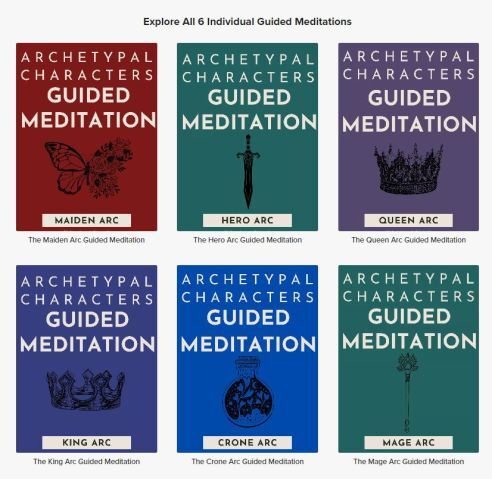
Archetypal Character Guided Meditations
Ultimately, storytelling with intention is nothing more than storytelling with honesty, integrity, discipline, and bravery. It begins when we first look deeply into ourselves and write with honesty what is there—no matter how unformed, ill-formed, frighteningly personal, vulnerable, or imperfect—rather than simply mirroring back what we see in others’ stories.
We follow that with the integrity—the wholeness, the cohesion—of making choices that align with those depths, with what feels right for us, with what serves to produce a story that has its own integrity, its own wholeness.
Then comes the discipline of staying with it, even when it’s hard, even when it seems there must be an easier way, a more fun way, a more profitable way, a less scary way. Staying in service to our own integrity is the surest path to any of these things. But even when it seems anything but, we must keep asking the questions that tell if we are indeed staying true to ourselves, our visions, and our stories—not our egos’ stories, but our deepest stories.
And then we face it all with courage—because there is no other way. Storytelling—real, true storytelling (okay, honestly some fake storytelling too) is the most frightening thing in the world. To write with truth requires the incredible vulnerability of feeling deeply into our most primordial selves. To then write well requires the supreme and often painful effort of teaching our brains new pathways, organizing our unruly and chthonic dreams into the straight line of language and communication.
If we fail from time to time in our intentionality with every piece and moment of our stories, it is little wonder. In the end, the only thing that matters is that we keep coming back to the deepest and most honest parts of what we are trying to create and share.
Why Intentional Storytelling Matters More Than Ever in an AI-Driven Content WorldIntentional storytelling has always mattered. But I write this post now because I feel it is more important than ever. Storytelling is the soul of culture, and perhaps as writers some of us have lost our souls a bit lately. The demands of content creation can make it easy to lose touch with the inner muse. Tools like AI can make this slide even more tempting. However, any assistance automated tools render us (in any aspect of life) can rob us of intentionality only insofar as we are out of touch with our own deep knowing and imagining.
How the Creative Landscape Is ChangingMany authors these days are asking themselves the hard questions. As the landscape of the artistic world—to say nothing of the world at large—changes so dizzyingly around us, it becomes ever more important for us to ask these questions. All humans are innately storytellers. But those of us who purport to shape and share our stories through the life-changing portals that are books and movies—perhaps bear a somewhat greater responsibility.
This is not a challenge to step away from the workings of modern life, but rather a challenge to experiment with every moment, to test and try and see and respond—to evolve when evolution is the truest and to stand fast when standing is truest—to allow ourselves the spontenaiety of each moment rather than the dogma of easy answers or quick fixes.
Why the Story Still Starts With YouIntentionality is not, nor ever will be, the easiest path for writers to take. But, truly, storytelling was never meant to be easy. As writers, it is our special sleight of hand that allows us to open portals into the depths of life under the guise of adventure and romance and mystery. There’s no such thing as “just” a story. That’s the trick. That’s the magic. But it only works when we, as storytellers and magicians, are in deep service to the integrity of the story itself.
Two Questions to Guide Every Writing DecisionAll you have to do is keep asking yourself these two questions:
Why? Why did I make this choice? Why did I put this in my story? Is it the easiest answer—or is it deep and true?How can I go deeper? How can I write something that is more honest, more real, more of my dreaming self?However you answer those questions—whether with certainty or with more questions—they are the beginning of a deeper relationship with your craft. Intentional storytelling isn’t a destination; it’s a continual practice of listening inward, trusting your creative instincts, and honoring the story that wants to be told through you. The path may not always be easy, but it is always worth walking one meaningful, intentional choice at a time.
In SummaryIntentional storytelling isn’t about rejecting tools or structure. It’s about using them with awareness, discernment, and, above all, honesty. In a time when it’s never been easier to churn out content that looks like a story, the real work of writing lies in remembering why we create in the first place. Every story worth telling begins not with trends or formulae, but with the deep, sometimes uncomfortable truths we carry inside ourselves.
To write with intention is to choose meaning over ease, depth over noise, and wholeness over quick results. It’s an act of quiet rebellion in a culture of speed and automation. We honor the sacred nature of story by treating it, not as a product to be packaged, but as a portal to something true, resonant, and lasting.
Key Takeaways on Intentional Storytelling:Intentional storytelling means making every creative choice with honesty, integrity, discipline, and courage.Tools like beat sheets and AI must be used with discernment and integrity.The rise of algorithm-driven content makes it more important than ever to return to the source: your own imagination, values, and story sense.Asking “Why?” and “How can I go deeper?” can reconnect you to authentic, resonant storytelling.Want More?If you’re feeling the pull to reconnect with your deeper creative self—to get out of your head and back into your story’s heart—my Archetypal Character Guided Meditations can help. I designed these immersive sessions to support you in finding the “dreamzone”: that quiet, intentional space where imagination flows freely, unshaped by algorithms or outside noise. In these times when technology offers us faster answers, my idea is for these meditations offer a return to deep, slow creativity. You can find them in my shop!
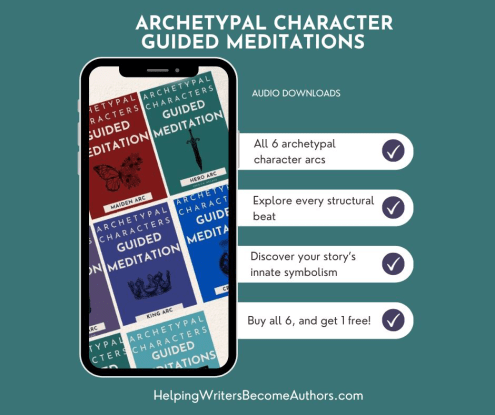
Go on the journey with your characters! Check out the Archetypal Character Guided Meditations.
Wordplayers, tell me your opinions! What does intentional storytelling mean to you—and where in your own writing process do you sometimes feel most tempted to trade depth for ease? Tell me in the comments!Click the “Play” button to Listen to Audio Version (or subscribe to the Helping Writers Become Authors podcast in Apple Podcast, Amazon Music, or Spotify).
___
Love Helping Writers Become Authors? You can now become a patron. (Huge thanks to those of you who are already part of my Patreon family!)The post Why Intentional Storytelling Matters in an Era of AI and Algorithm-Driven Content appeared first on Helping Writers Become Authors.
June 30, 2025
The Secret to Writing Witty Characters (Without Trying So Hard)
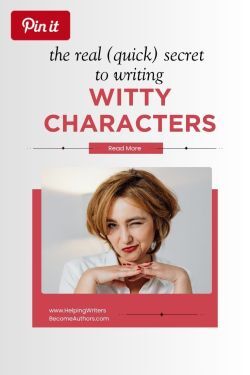 There’s nothing like a sharp-tongued, quick-witted character to light up a scene—especially when the stakes are high or the tone is dark. From sarcastic sidekicks to roguish heroes, witty characters often steal the show. But when the humor feels forced or out of character, it can suck the life right out of a story. So why does some wit dazzle while other attempts fall painfully flat?
There’s nothing like a sharp-tongued, quick-witted character to light up a scene—especially when the stakes are high or the tone is dark. From sarcastic sidekicks to roguish heroes, witty characters often steal the show. But when the humor feels forced or out of character, it can suck the life right out of a story. So why does some wit dazzle while other attempts fall painfully flat?
In the last few years, there have been a rash of movies (mostly summer blockbusters) that try really hard to live up to the witty legacies of films such as Indiana Jones and the original Star Wars, only to fall sadly short.

Star Wars: The Empire Strikes Back (1980), 20th Century Fox.
Why is this?
Often, it isn’t the jokes that are to blame. Words that might have been hilarious coming out of the mouth of Han Solo fall flat on their faces coming out of the mouths of other characters.
So what’s the difference?
In a nutshell: character.
The secret to pulling off a witty character is putting the emphasis not on the wit itself, but on the character.
As we’re planning or writing our stories, it’s easy to say, “You know, it would be fun to have a witty character. A wisecracking hero or a bumbling sidekick.” So we stick ‘em in. But our immediate problem with this decision is that we may be trying to force the humor, instead of allowing it to emerge organically from the character.
Humor grows all the more funny in context. And when that context is a fully developed personality, the humor is then able to offer not just a bigger laugh, but a deeper understanding of both the character and the plot.
If your characters are nothing more than smart mouths, readers will instantly perceive they’re cardboard cutouts, stuck in to garner a quick laugh. Some readers will forgive you for this, particularly if you do indeed happen to be able to write hilarious dialogue. But others may resent it as a gimmick and go looking for something that manages to combine both entertainment and depth.
When you craft characters who are fully realized—whose humor springs from their worldviews, flaws, and relationships—that’s when the wit lands with authenticity and impact. Humor can become more than a joke; it can be an insight. So next time you write a snappy one-liner, ask yourself: is it something this character would say, or something you wish someone would say? Instead of just sticking witty words in characters’ mouths, create complete personalities from whom the wit can flow realistically, organically, and engagingly
For more on writing authentic humor, see these posts:
How to Write Funny6 (More) Ways to Improve Your Book by Writing HumorThe Hilarious 2-Step Plan for Writing Humor in FictionHow to Write Funny Dialogue4 Ways to Write Meaningful ComedyWordplayers, tell me your opinions! What’s your best advice for writing witty characters? Who is a favorite example of one done right in fiction? Tell me in the comments!The post The Secret to Writing Witty Characters (Without Trying So Hard) appeared first on Helping Writers Become Authors.


